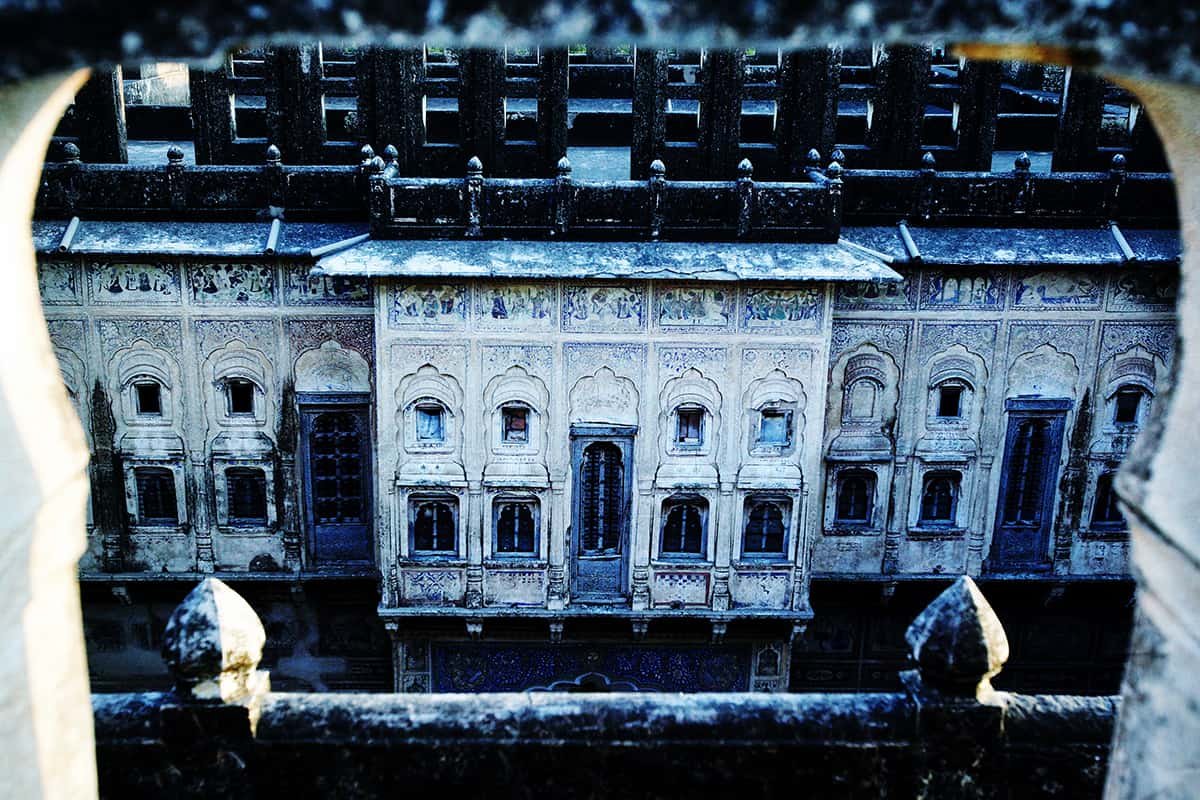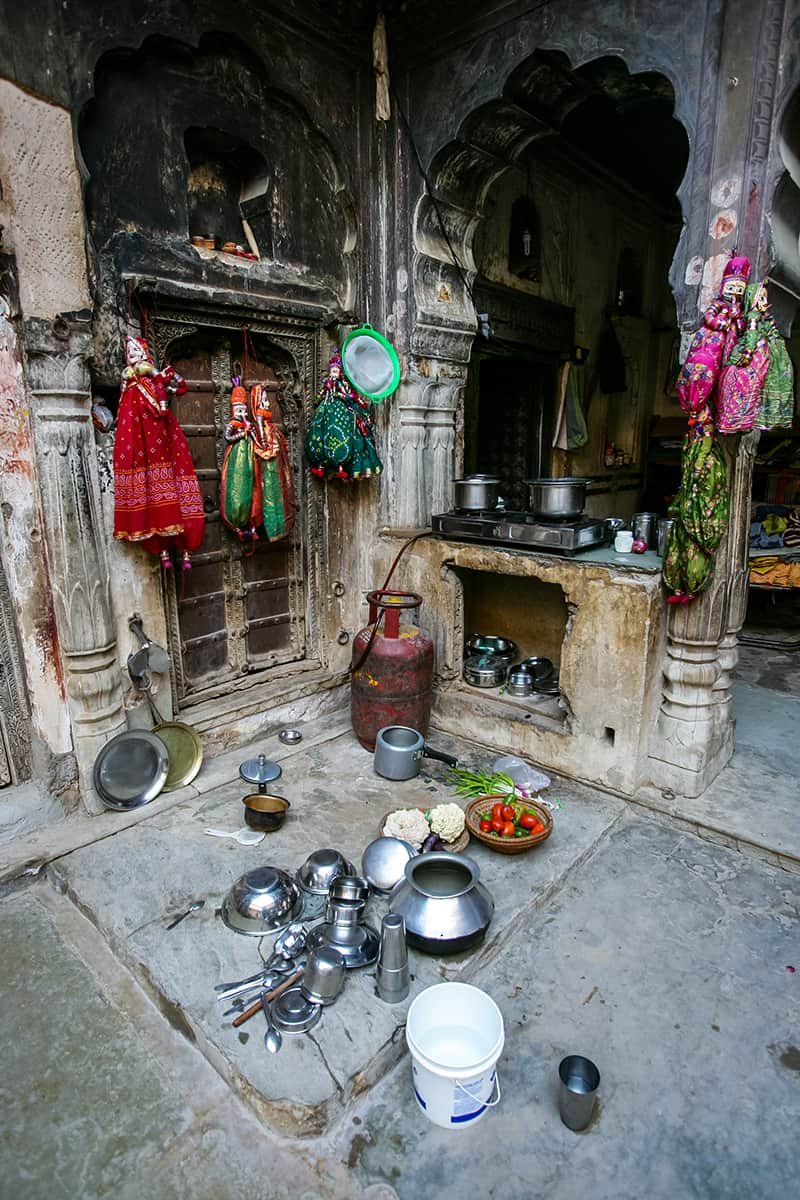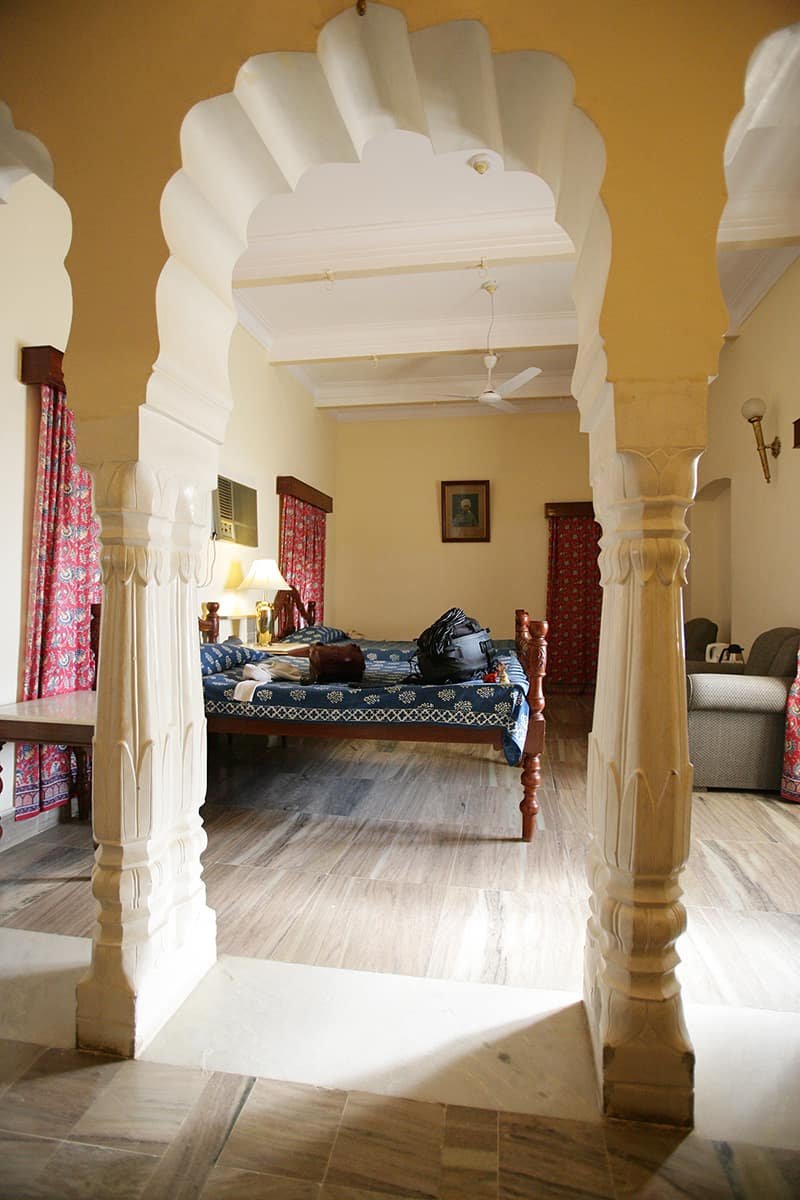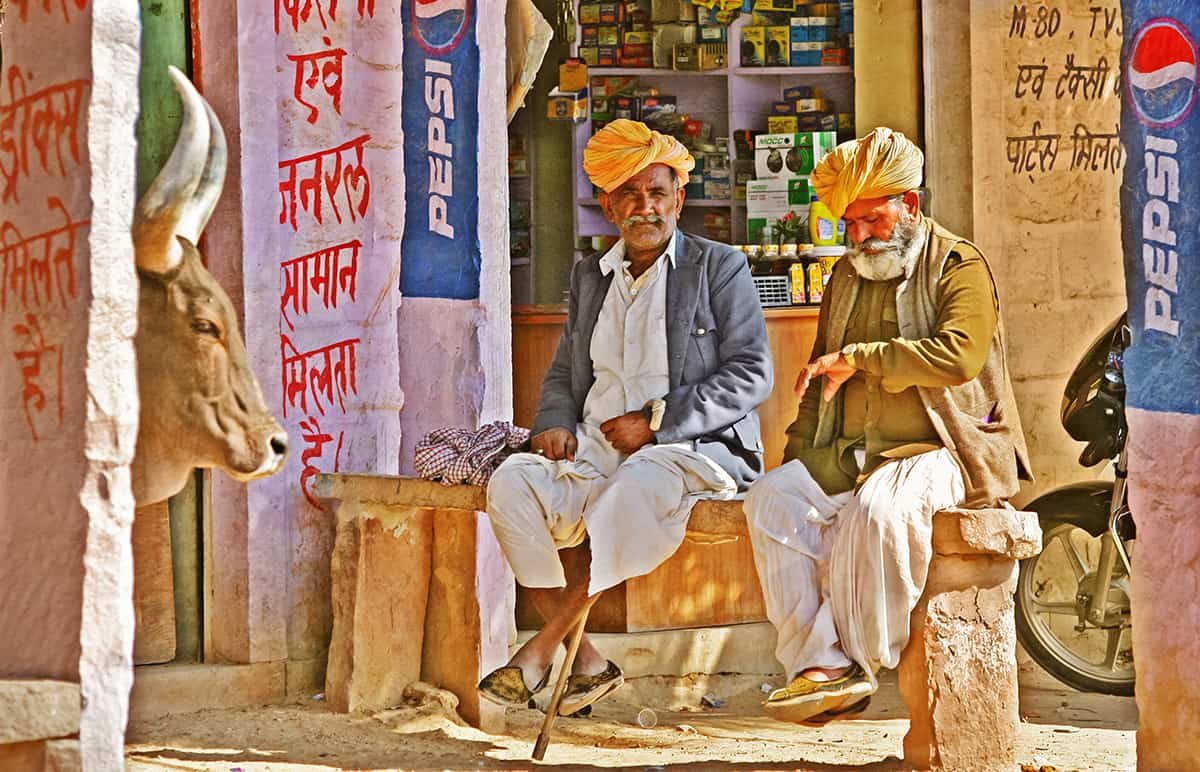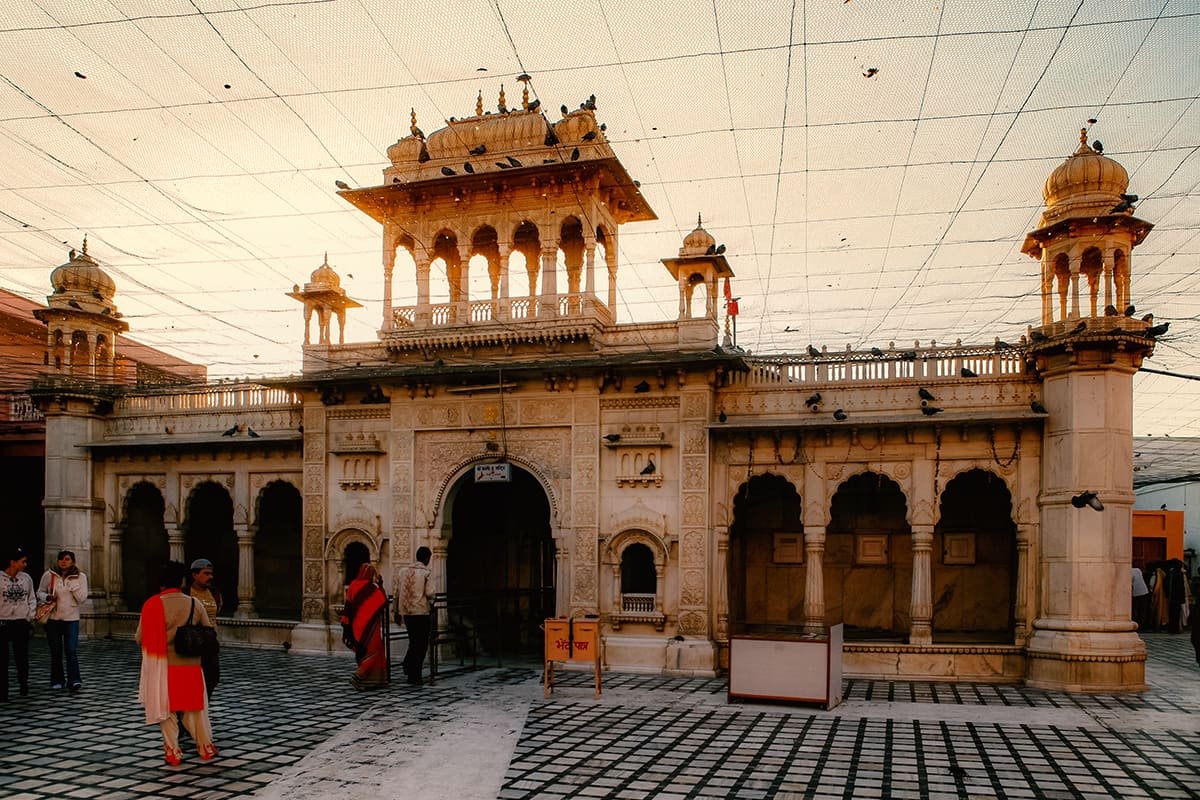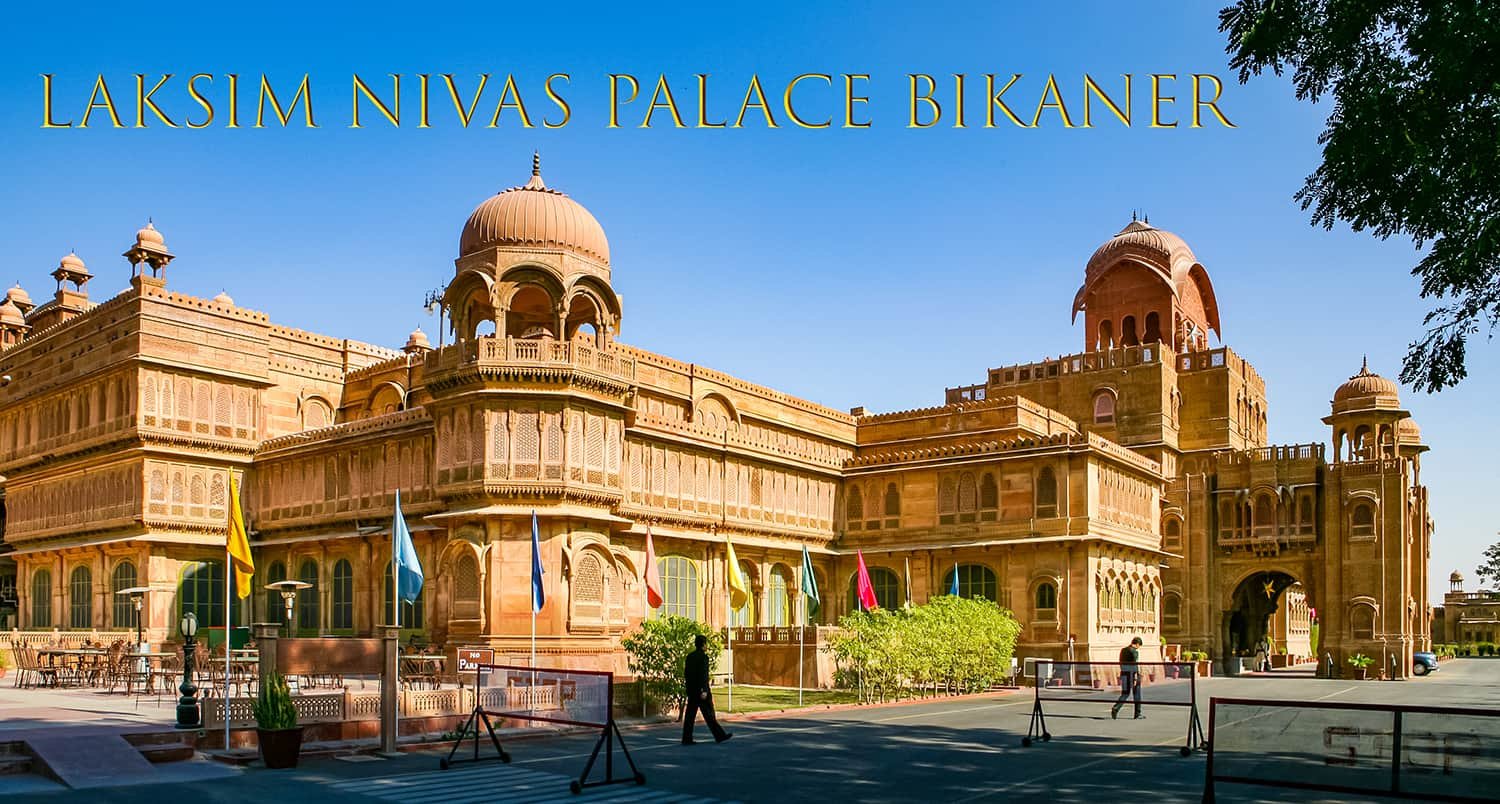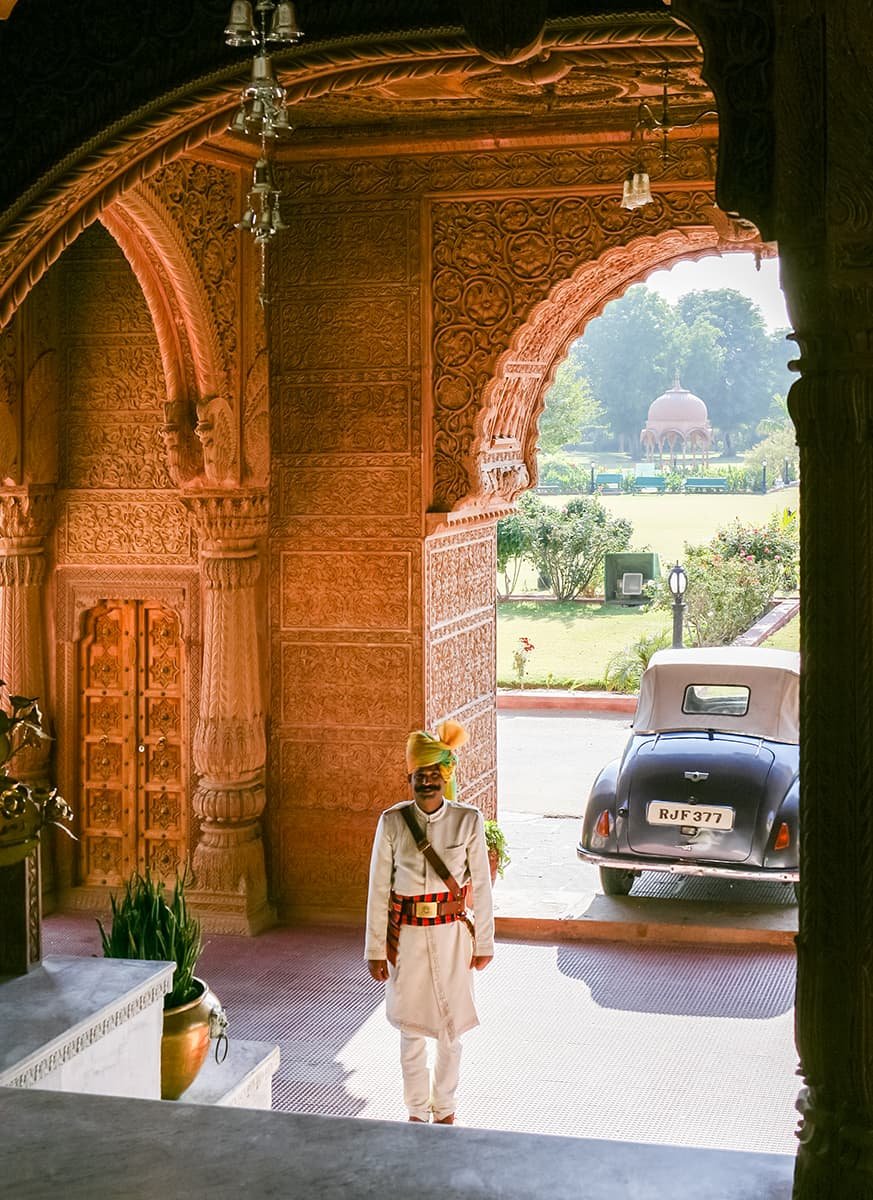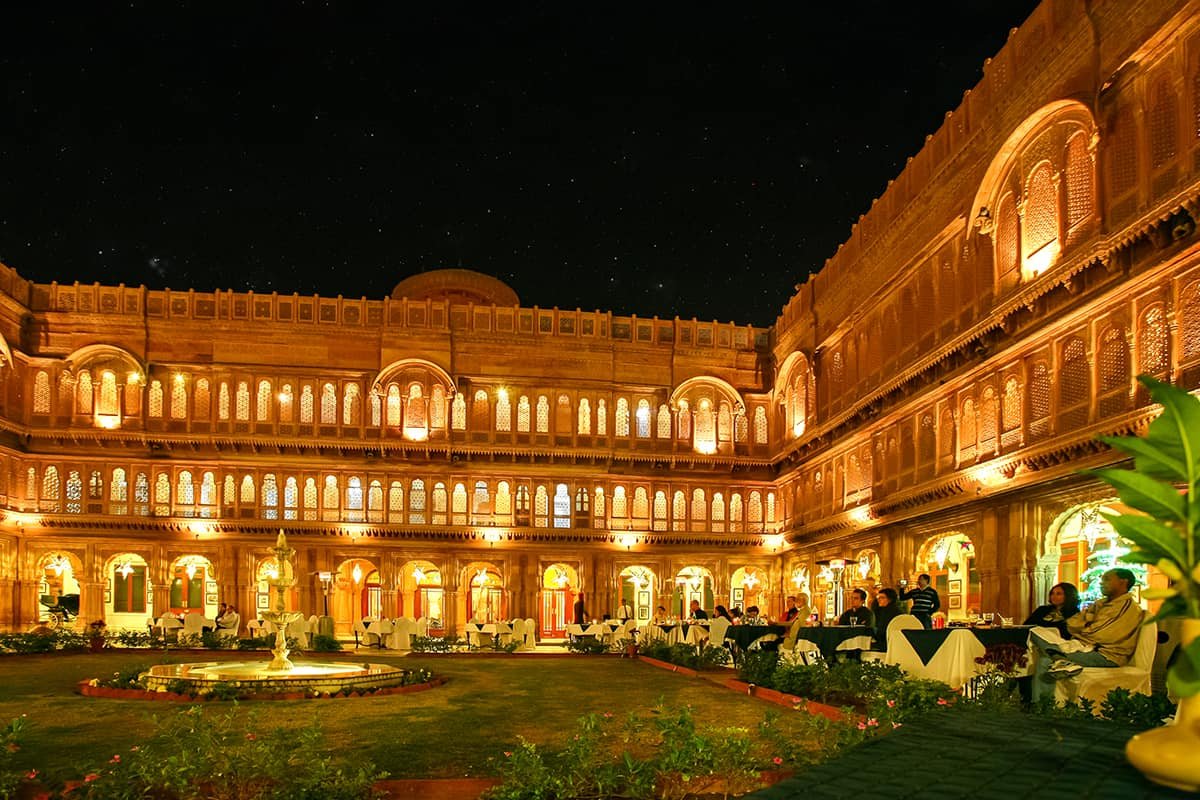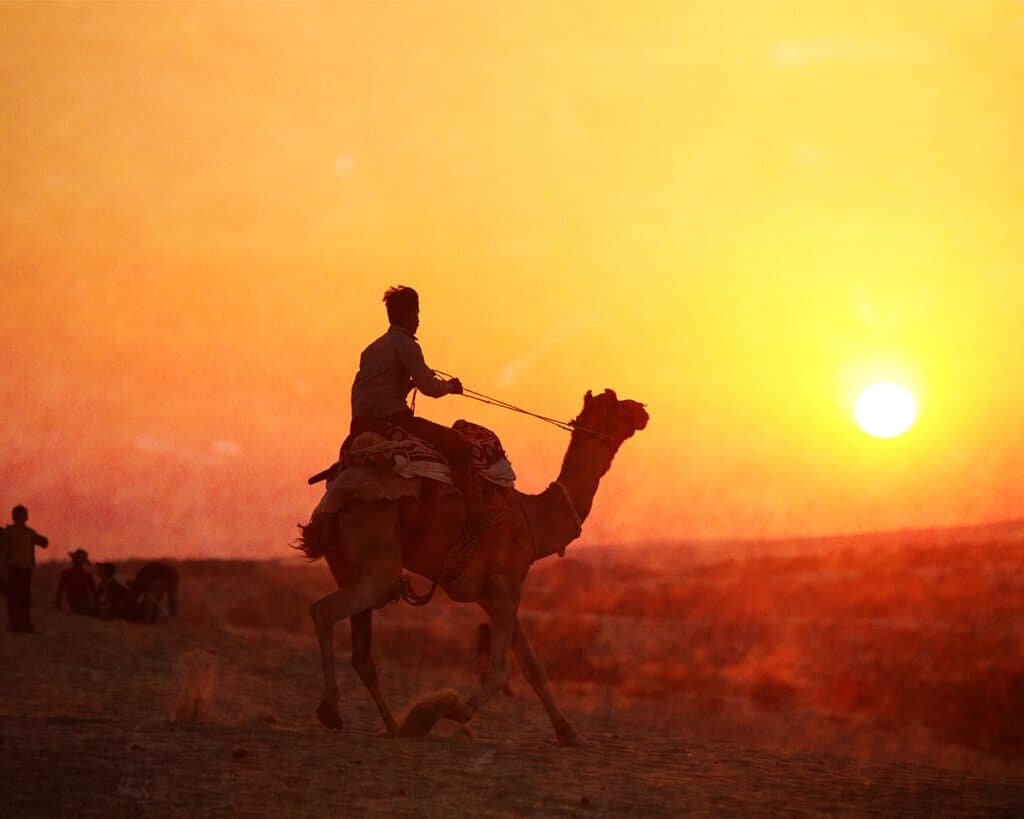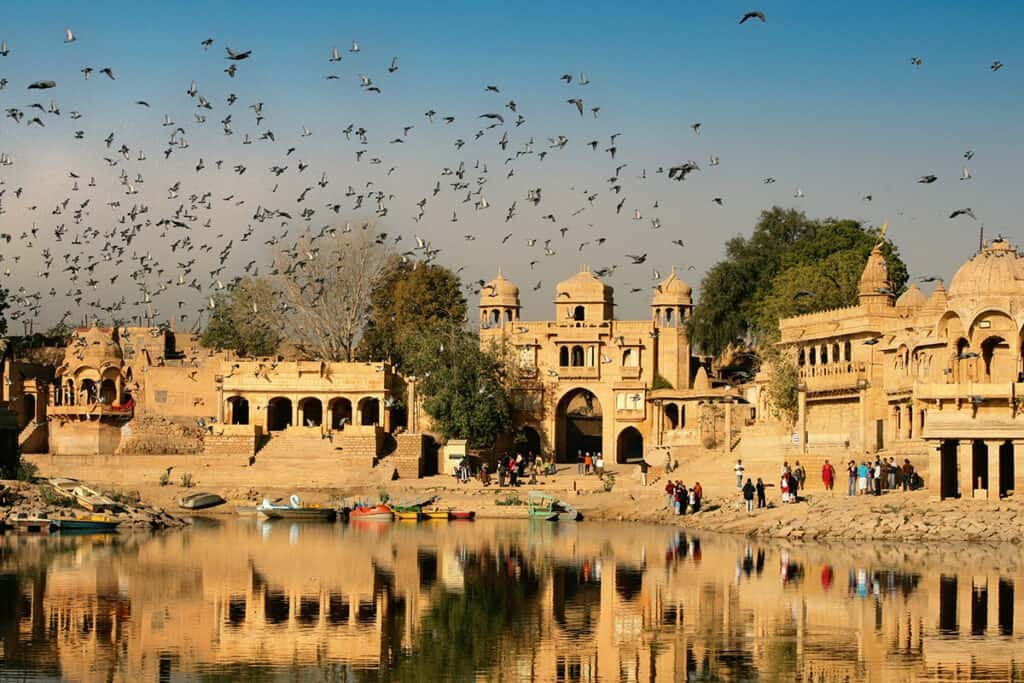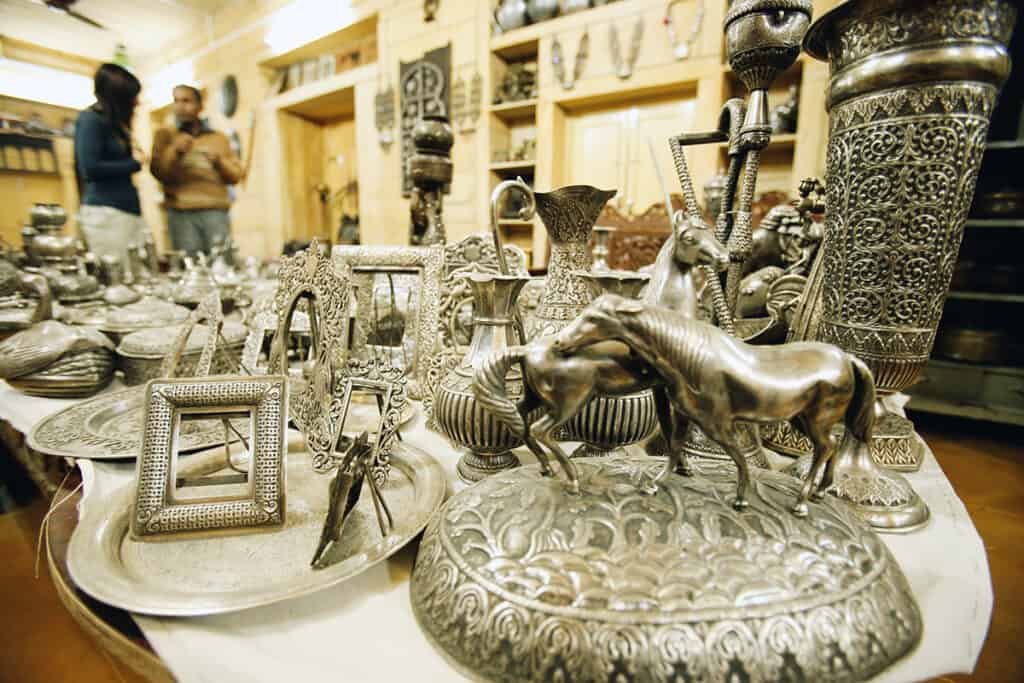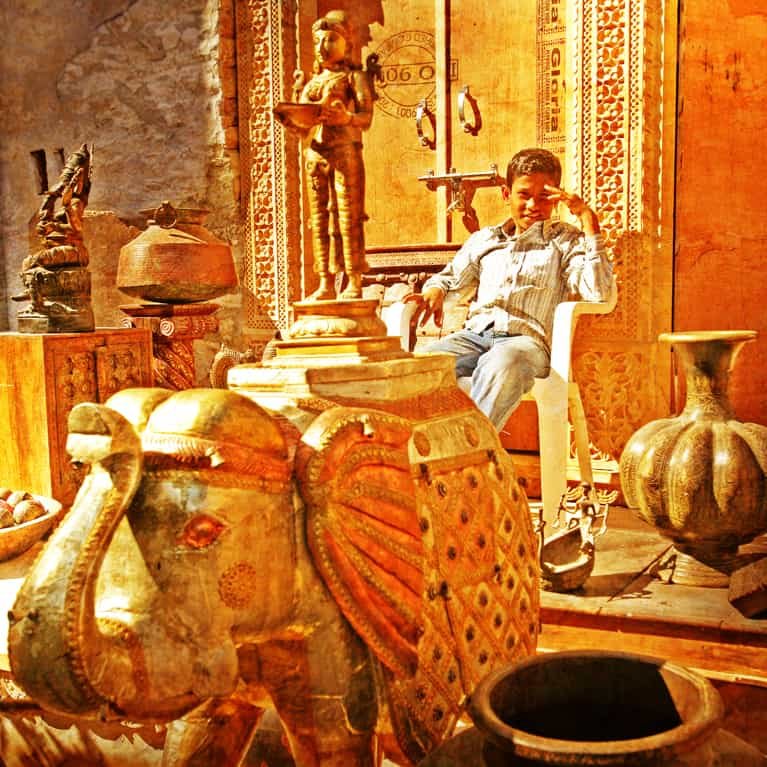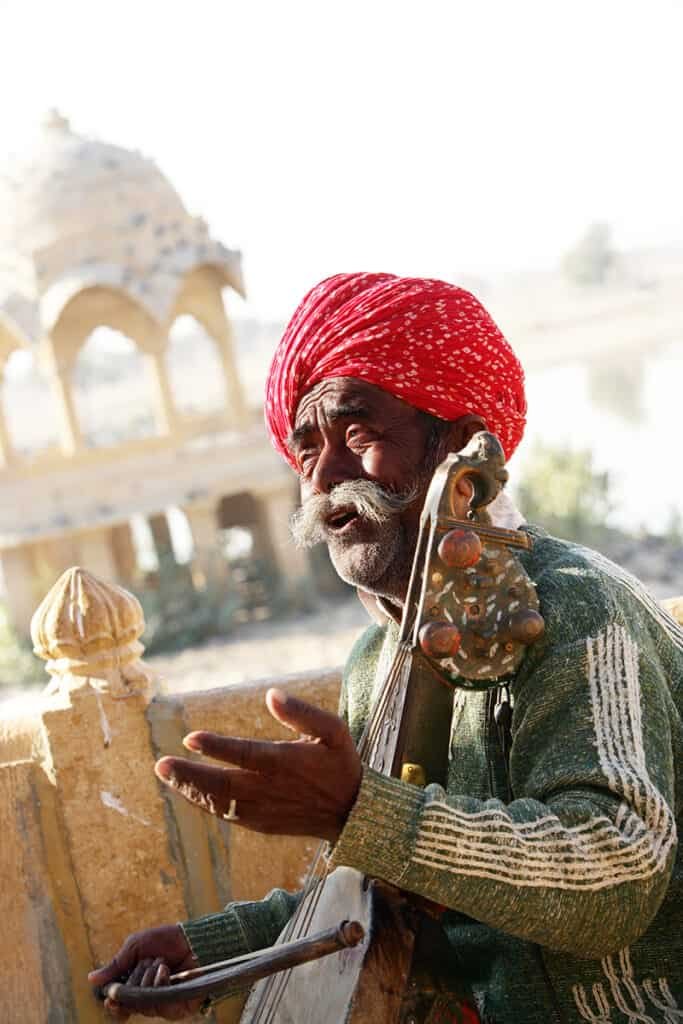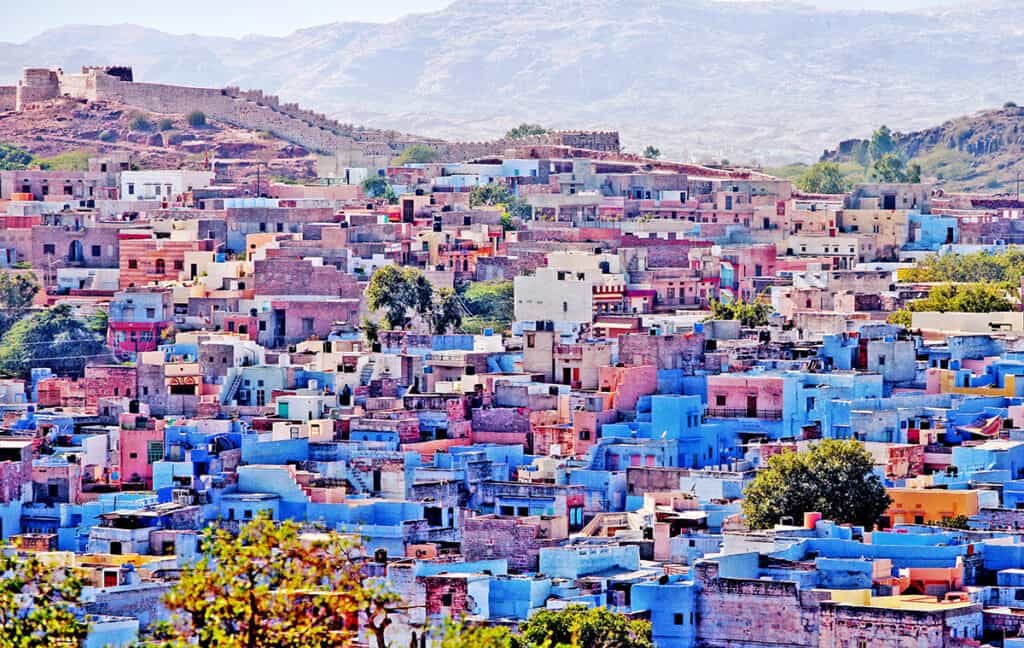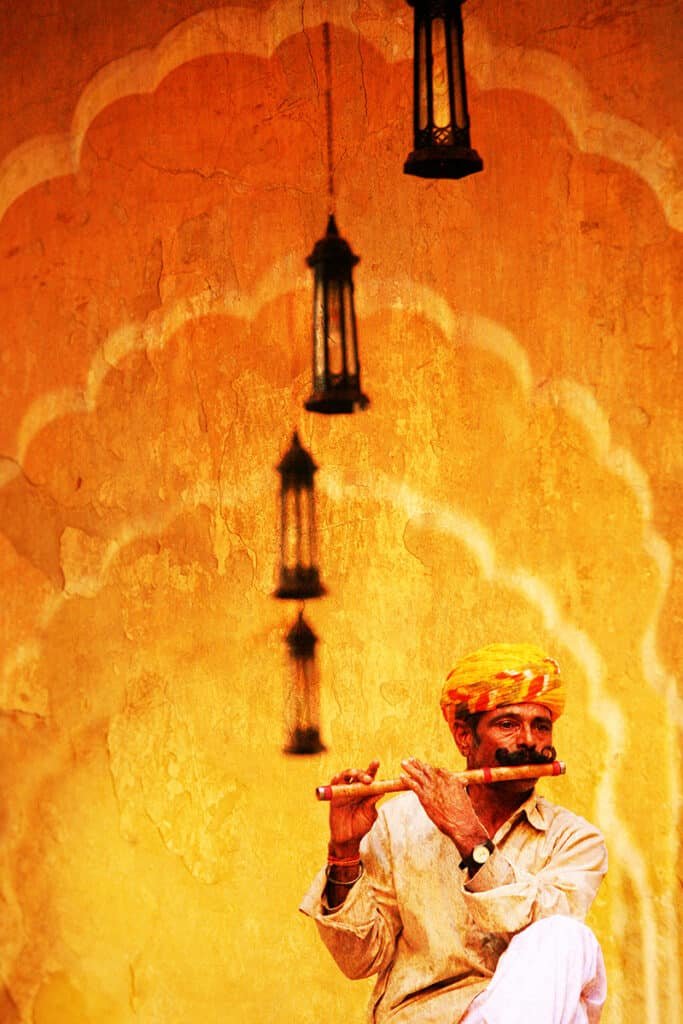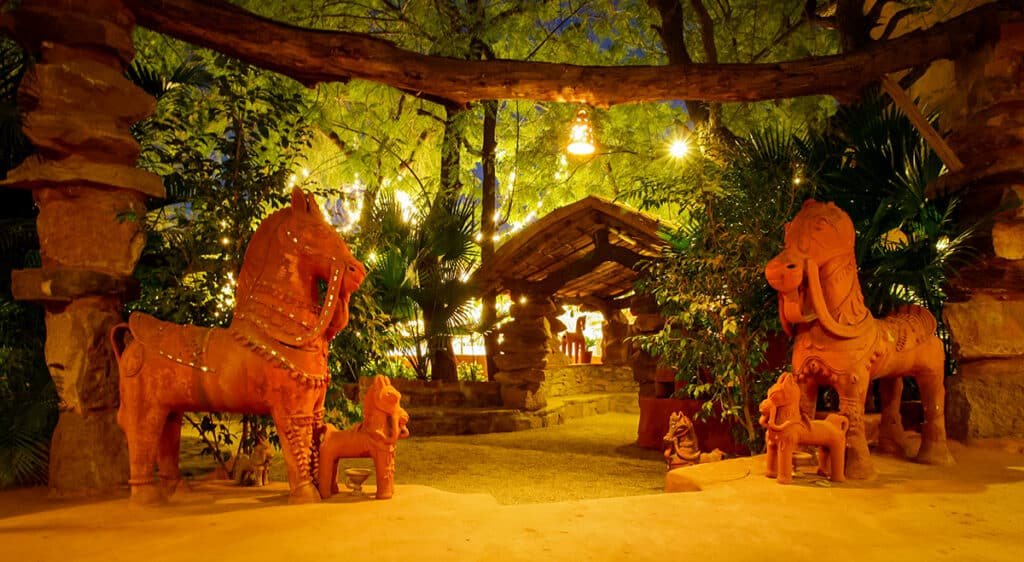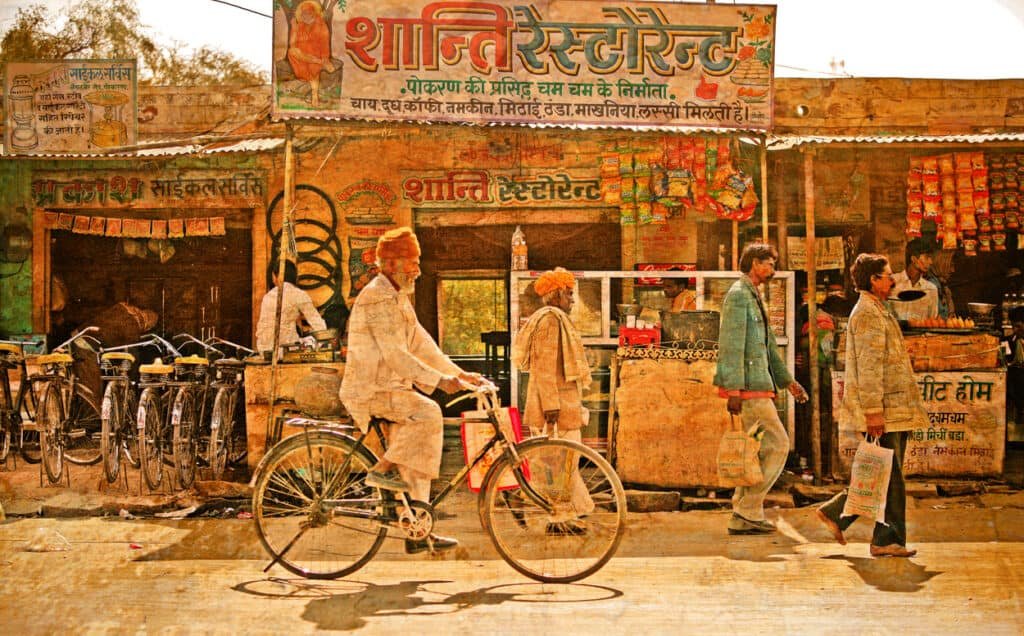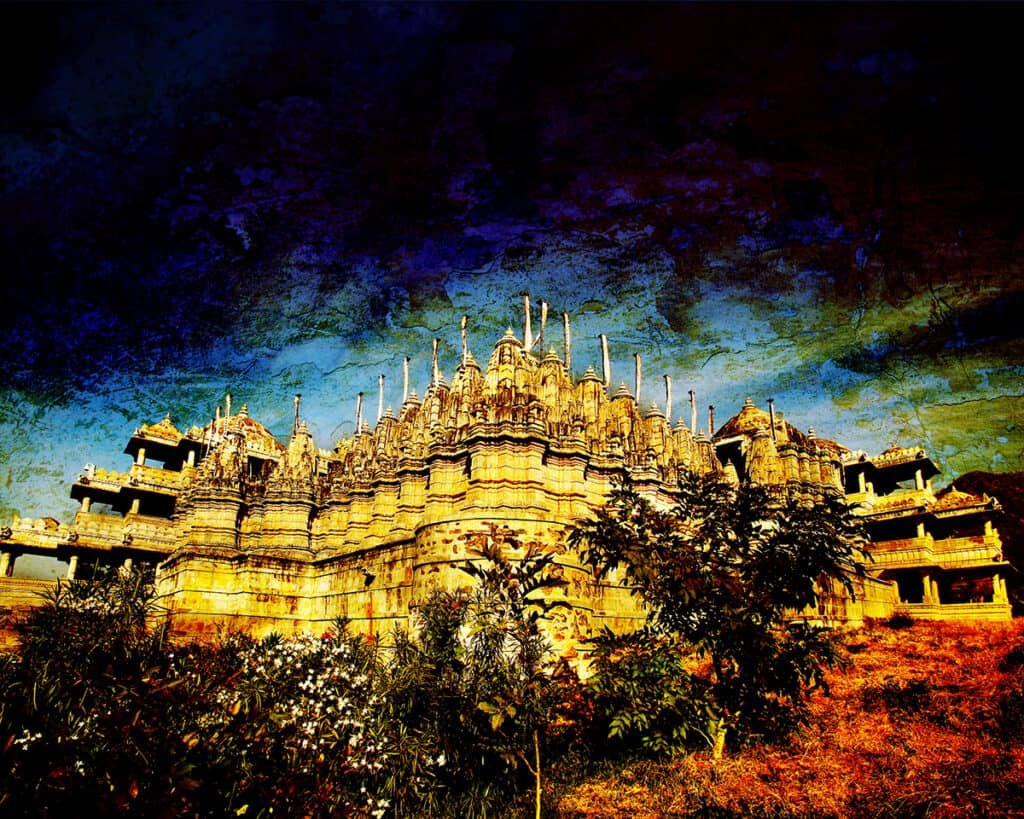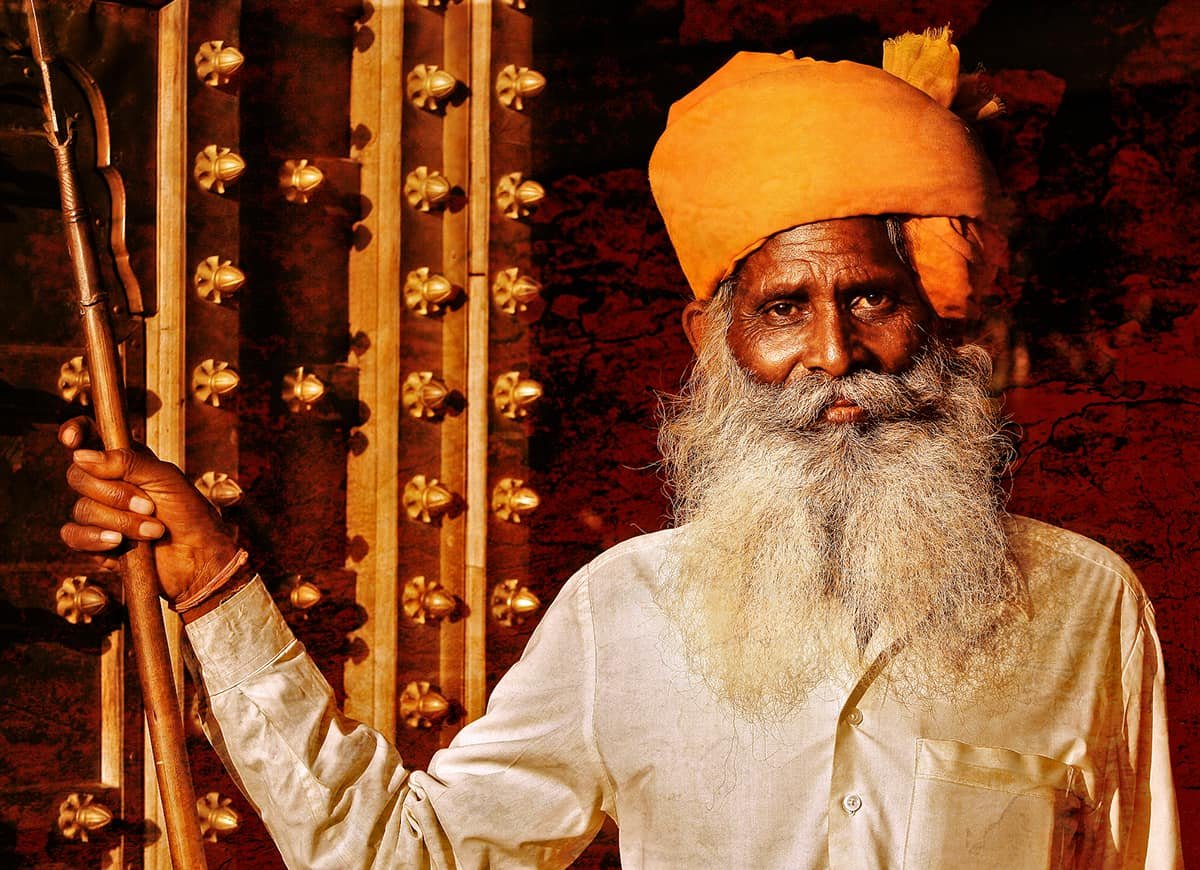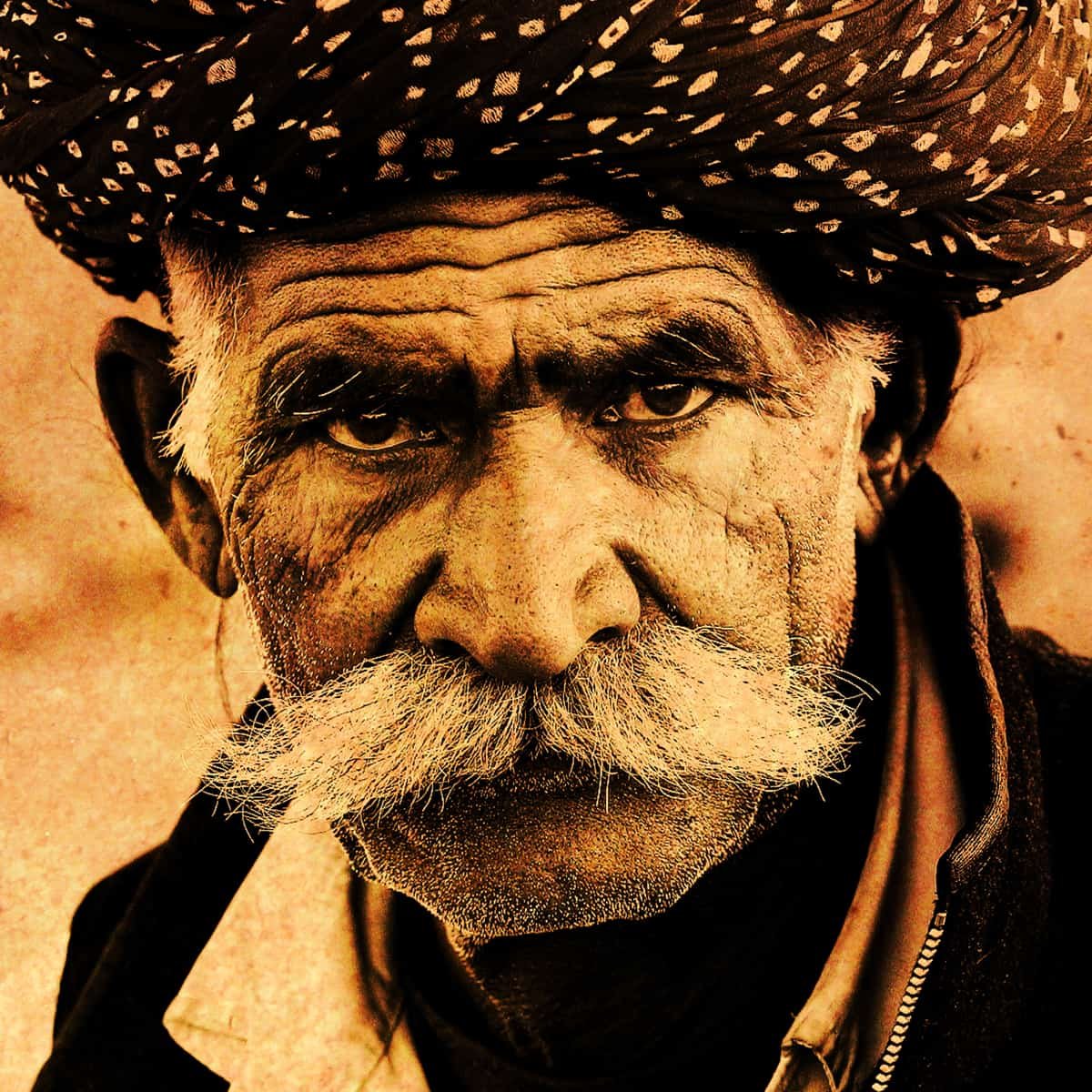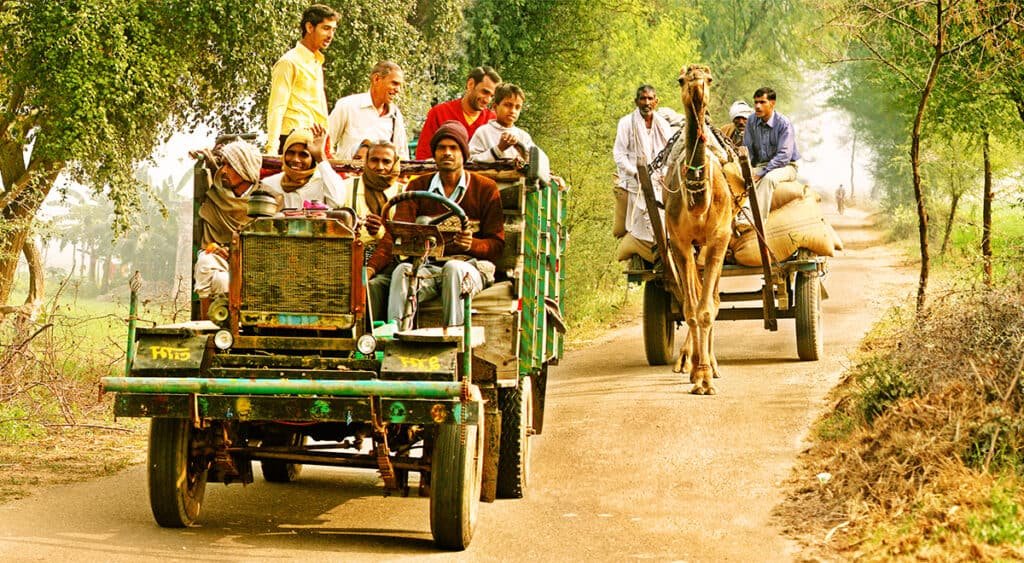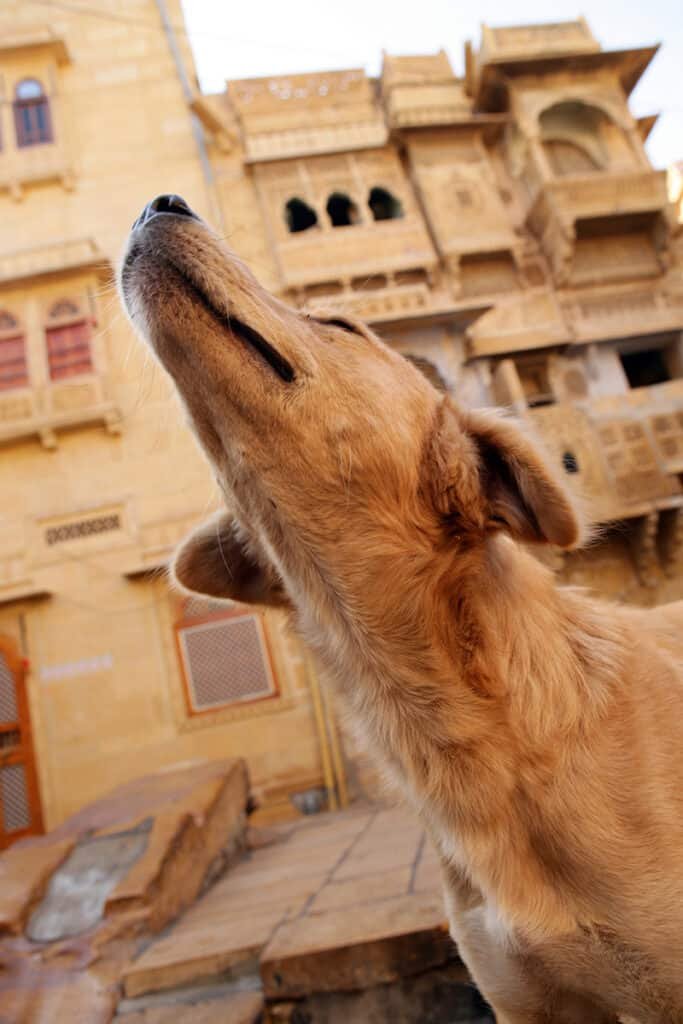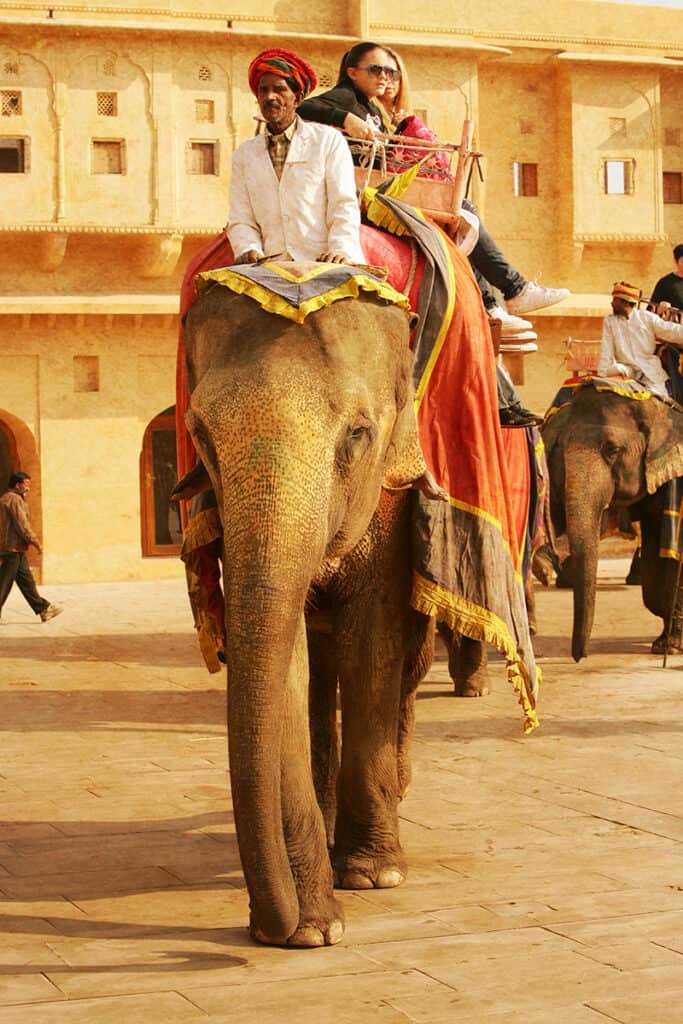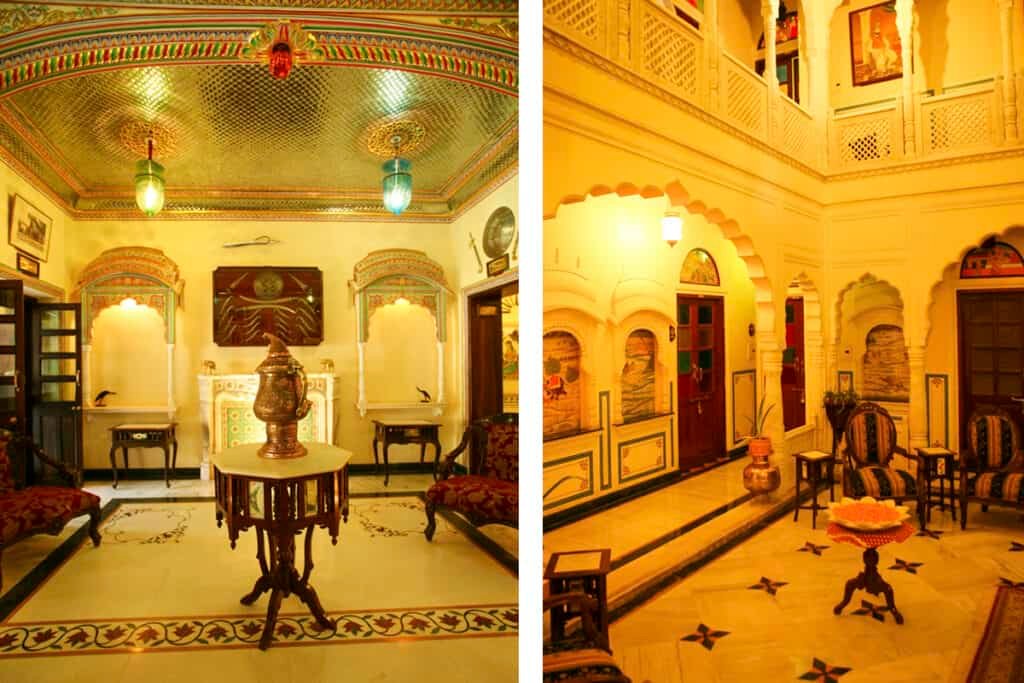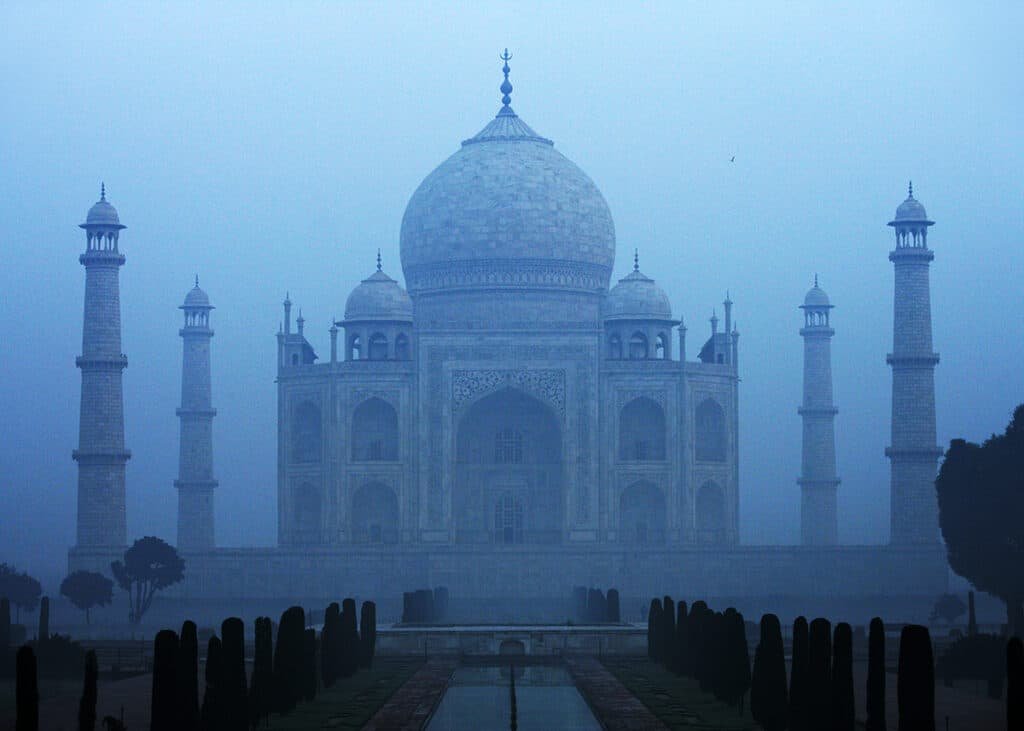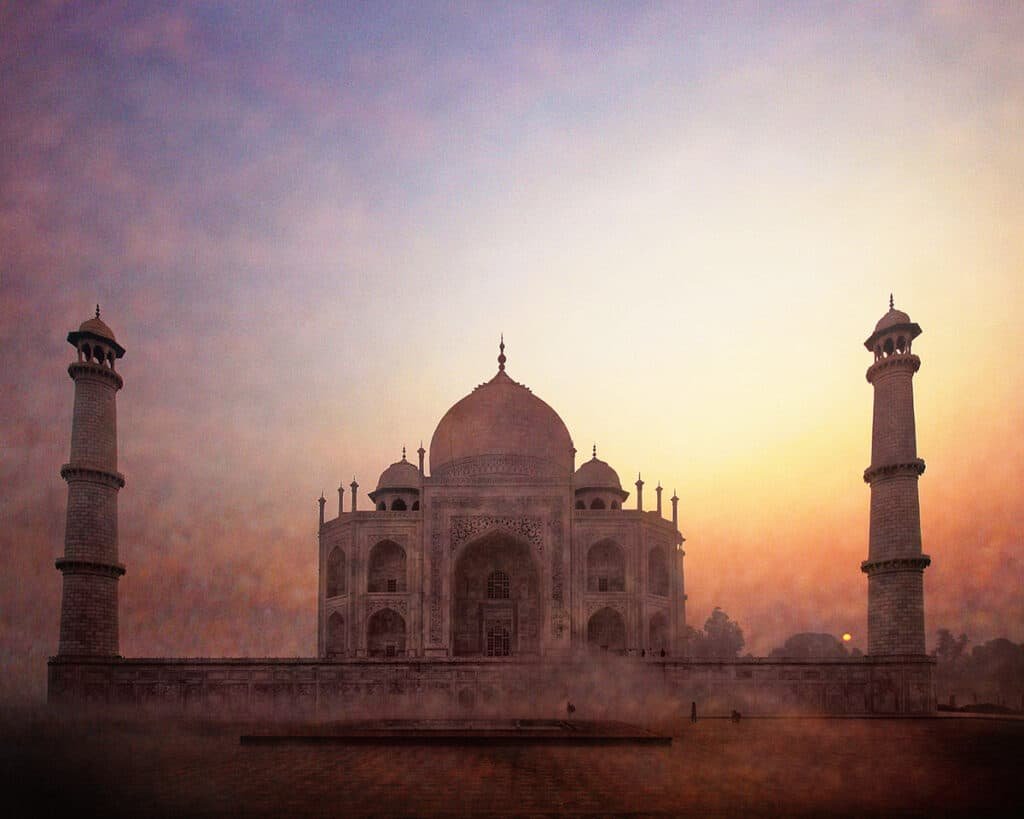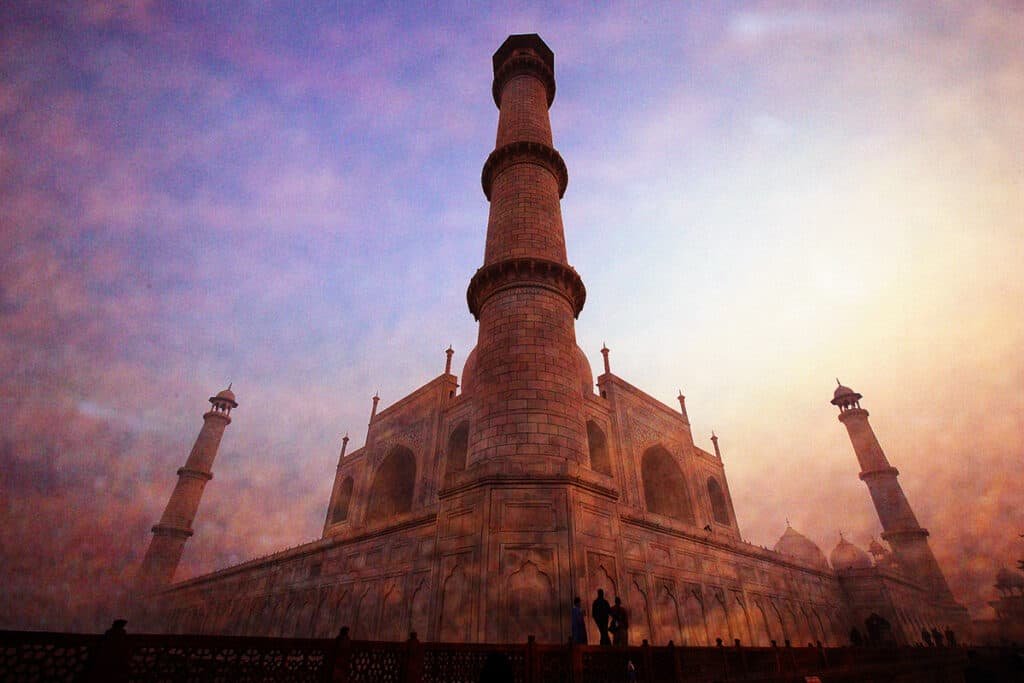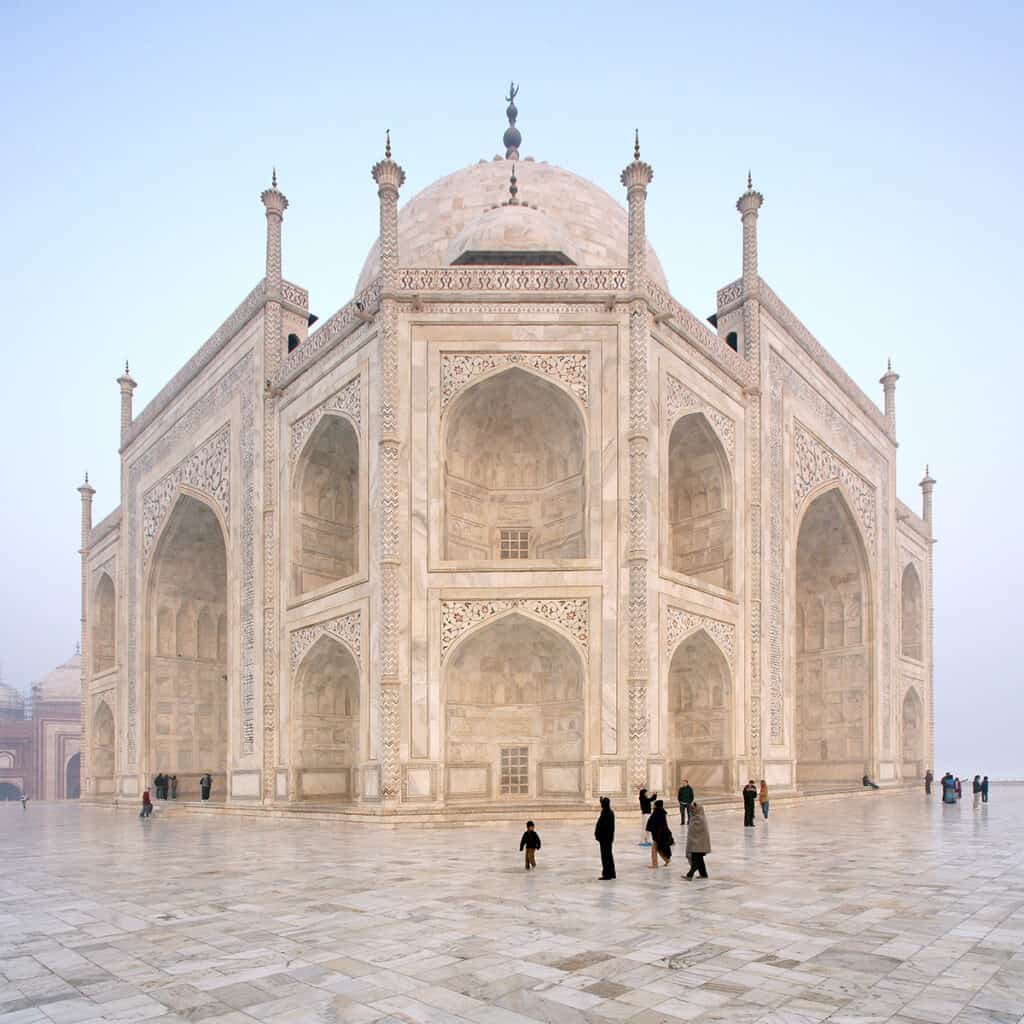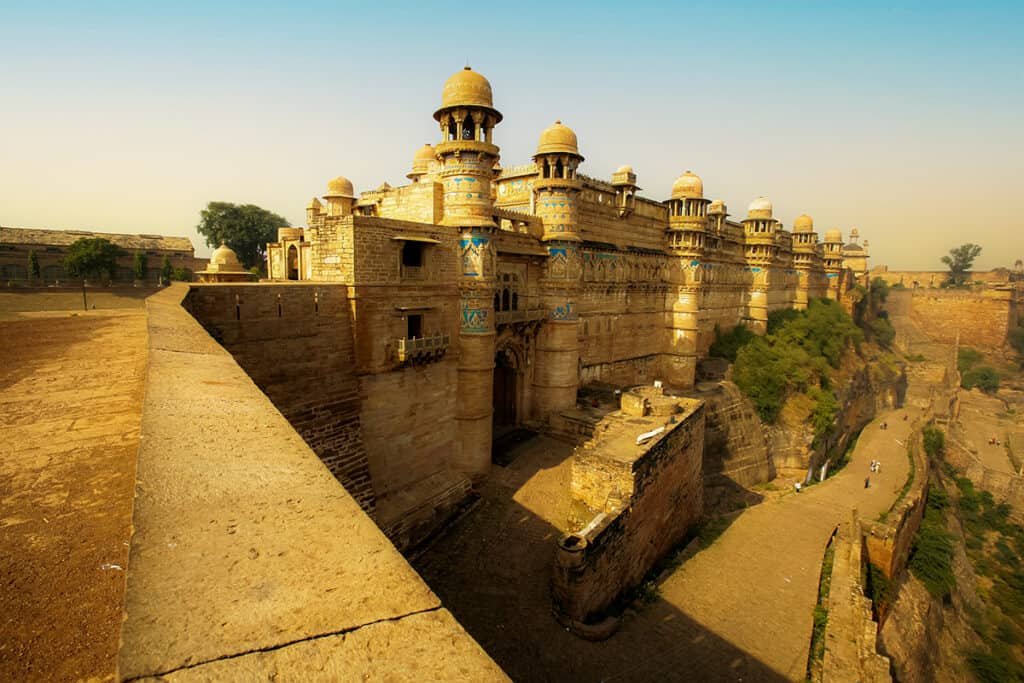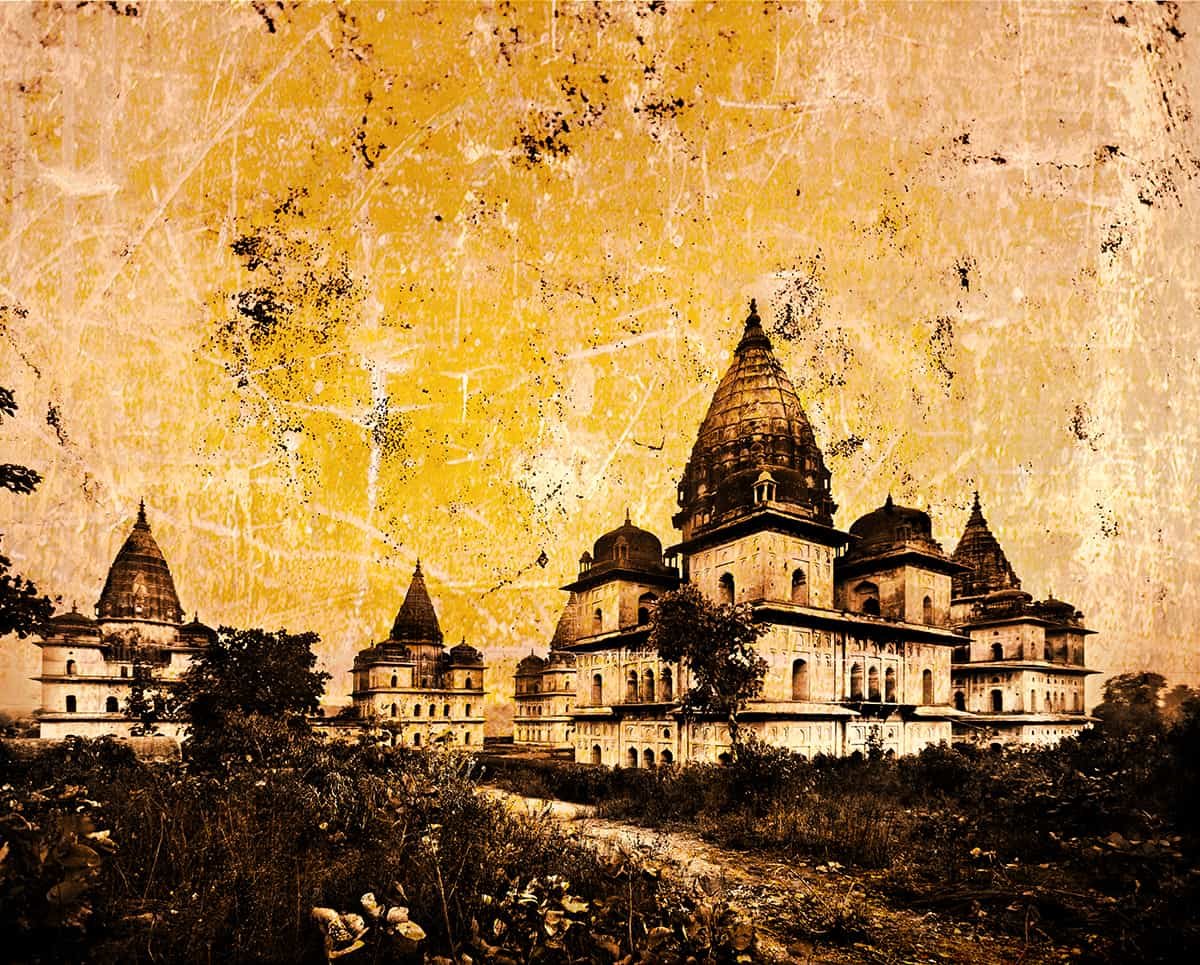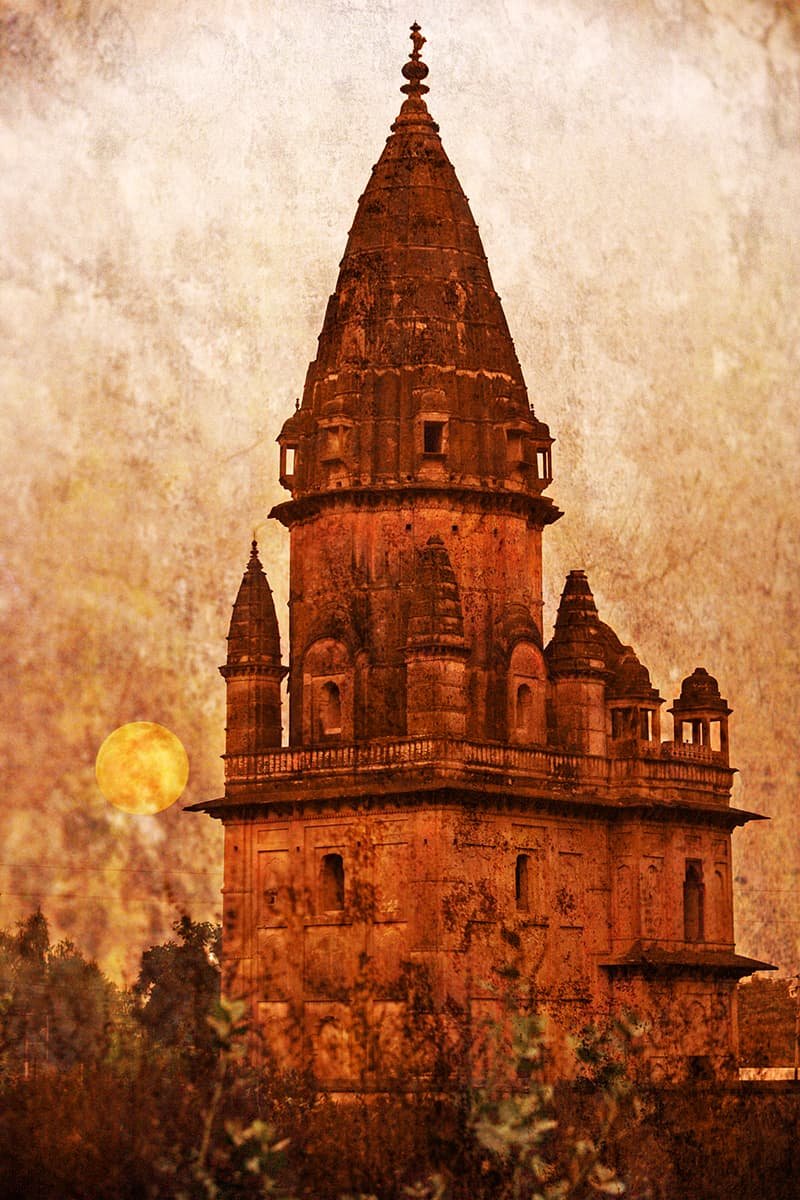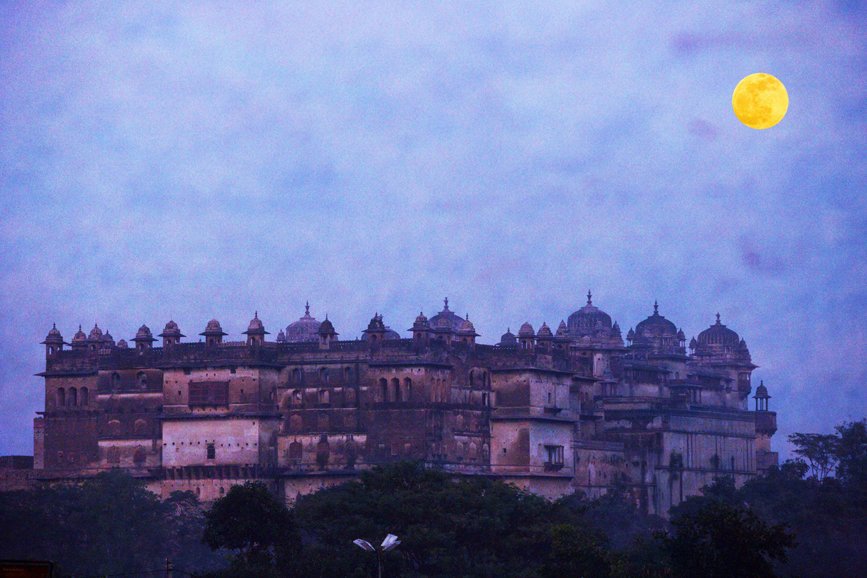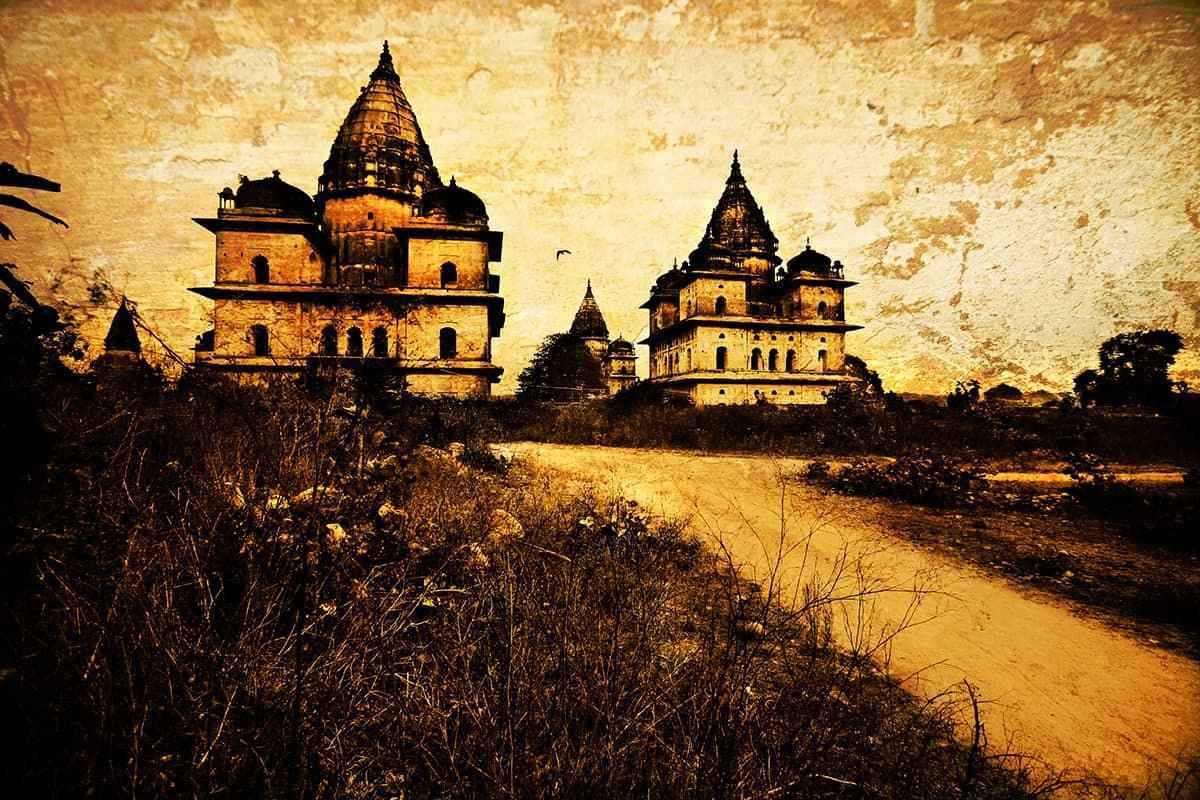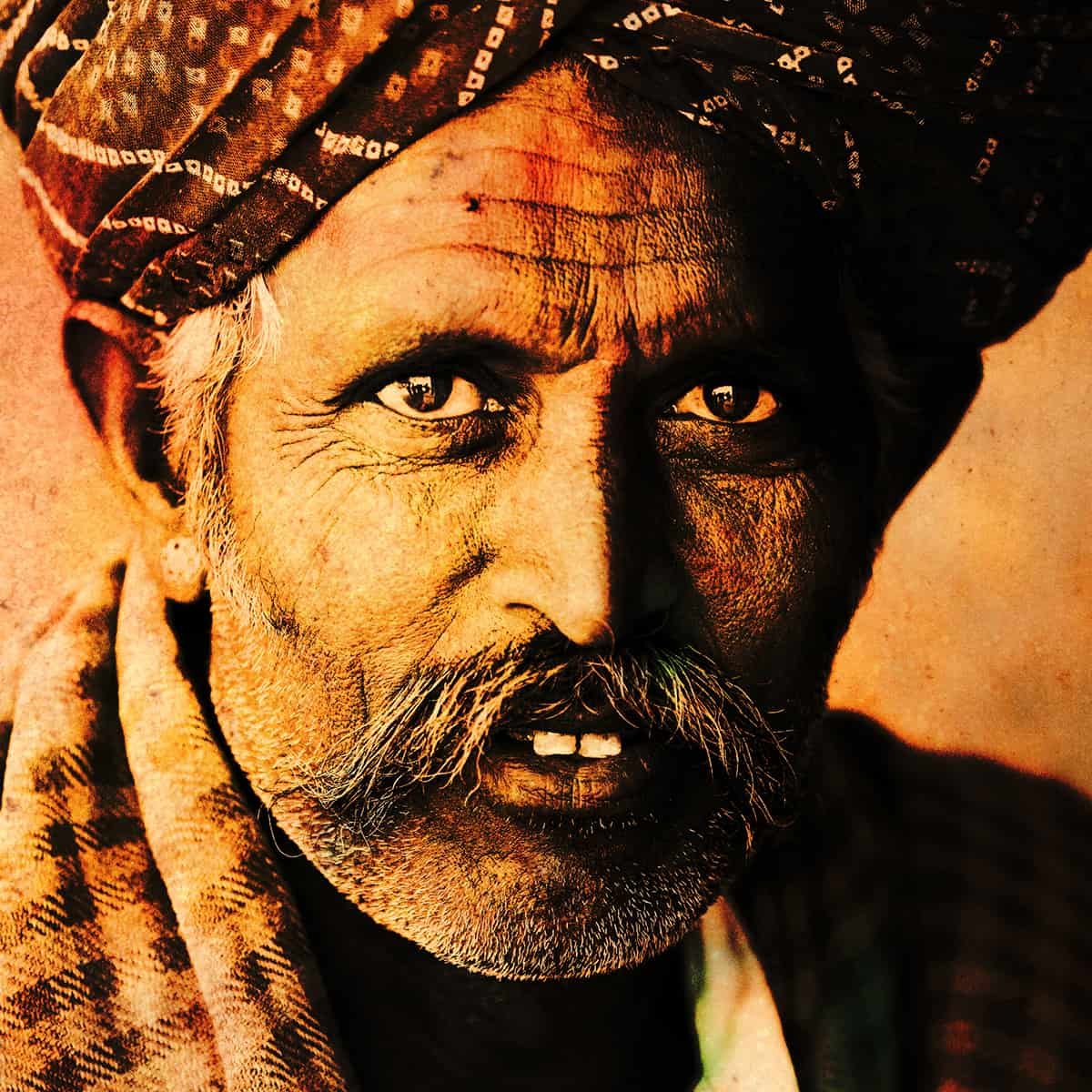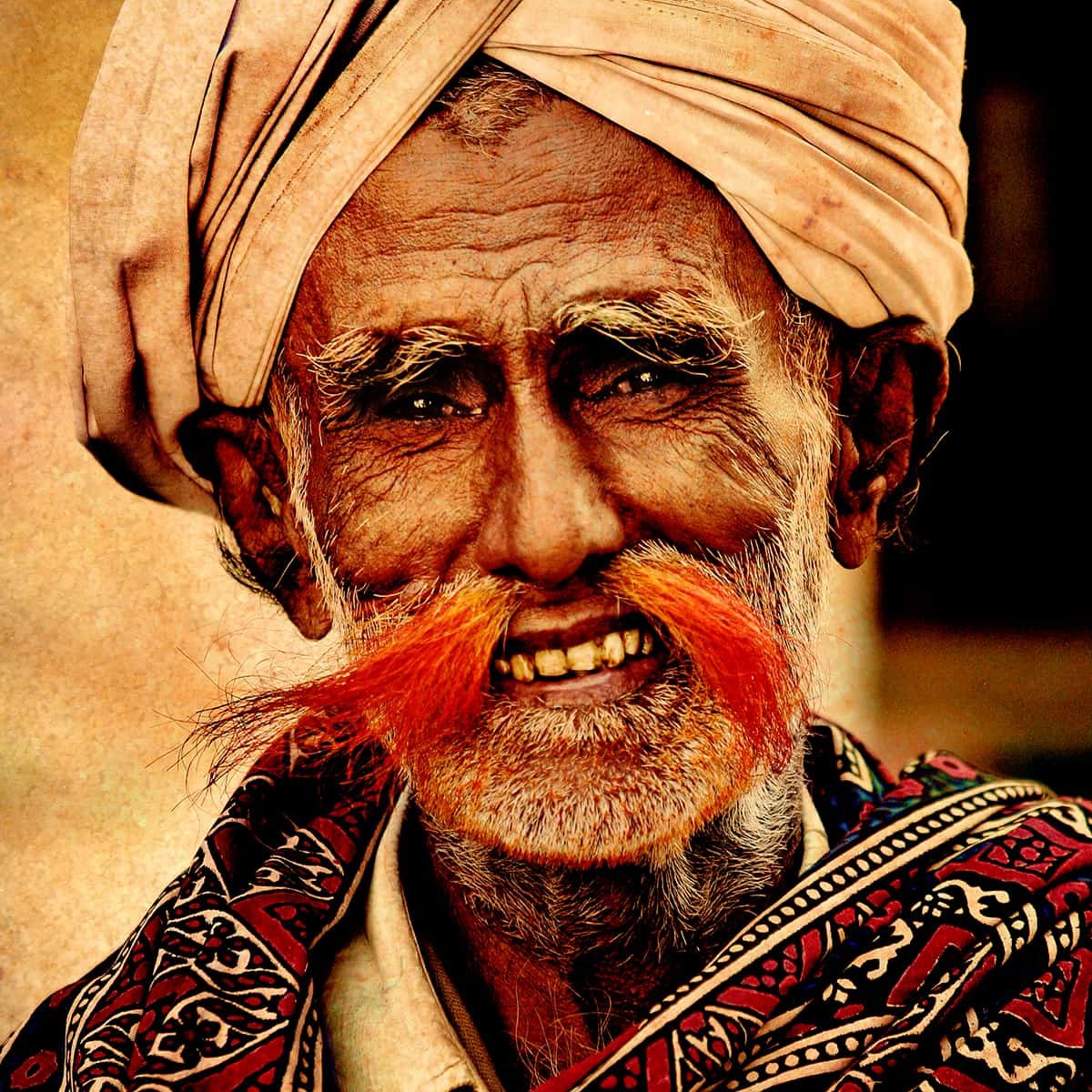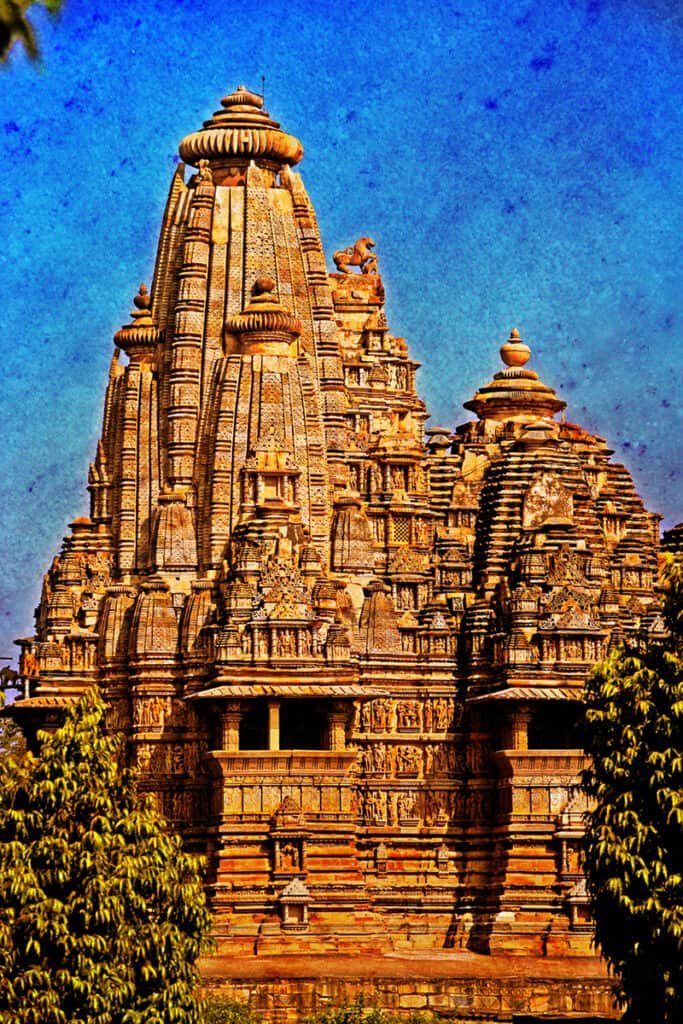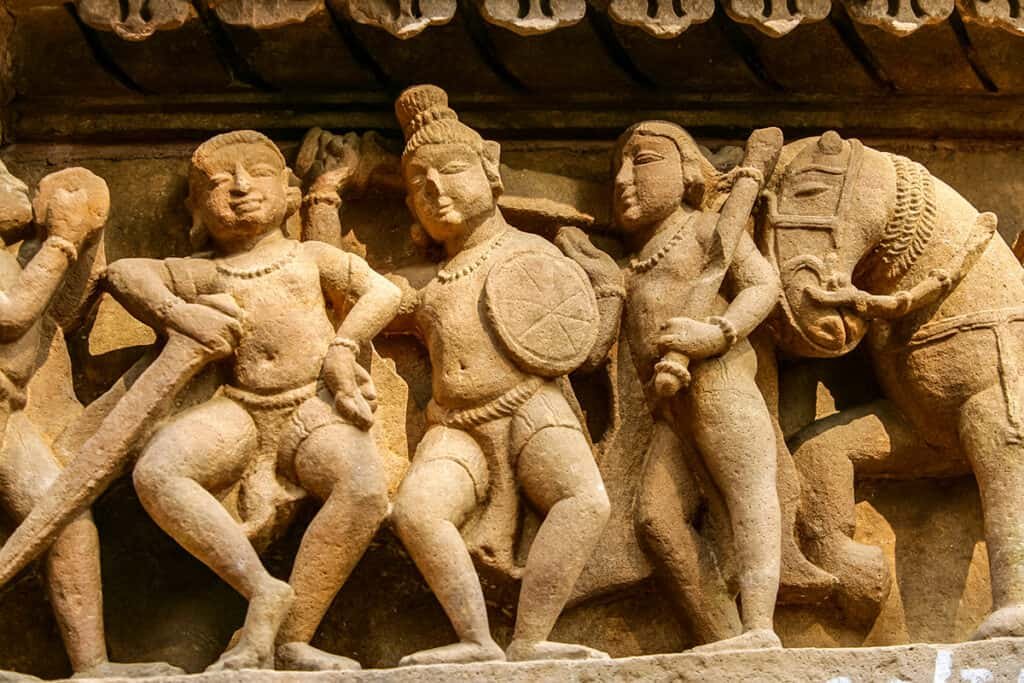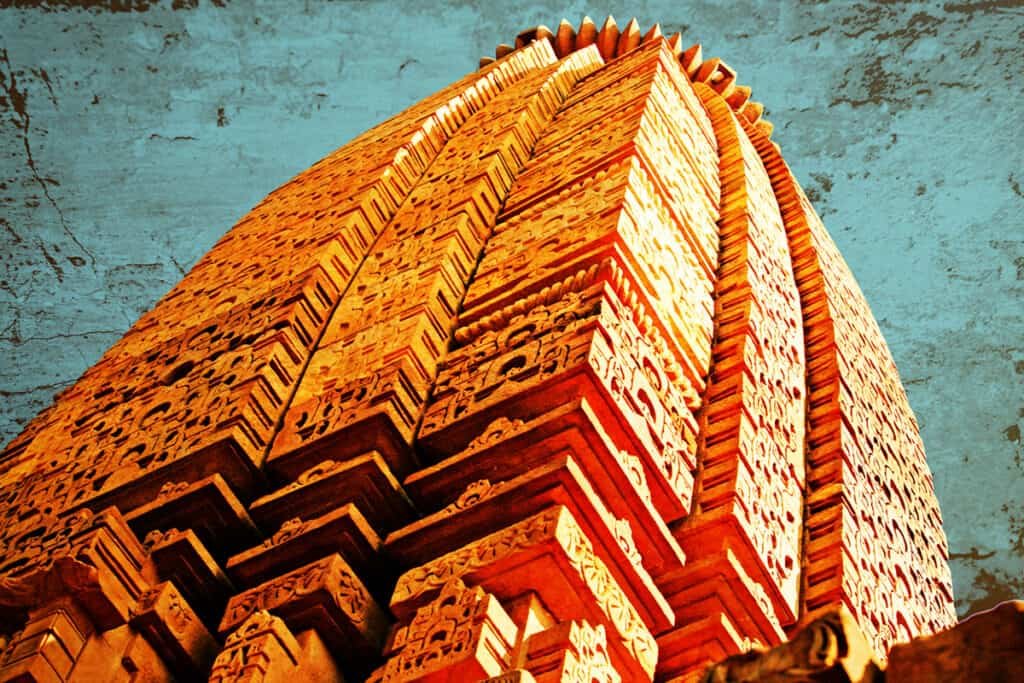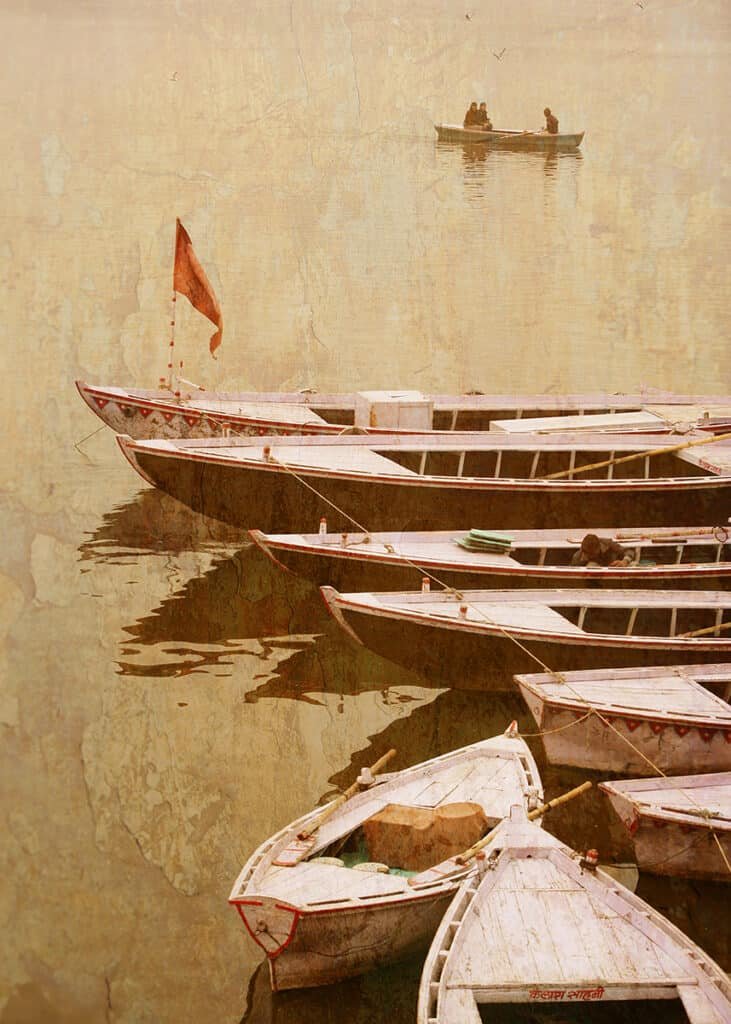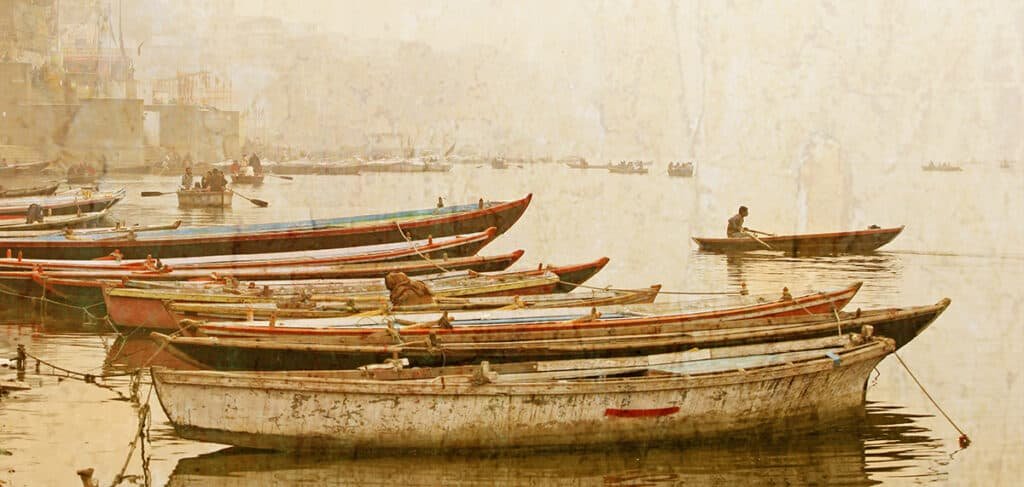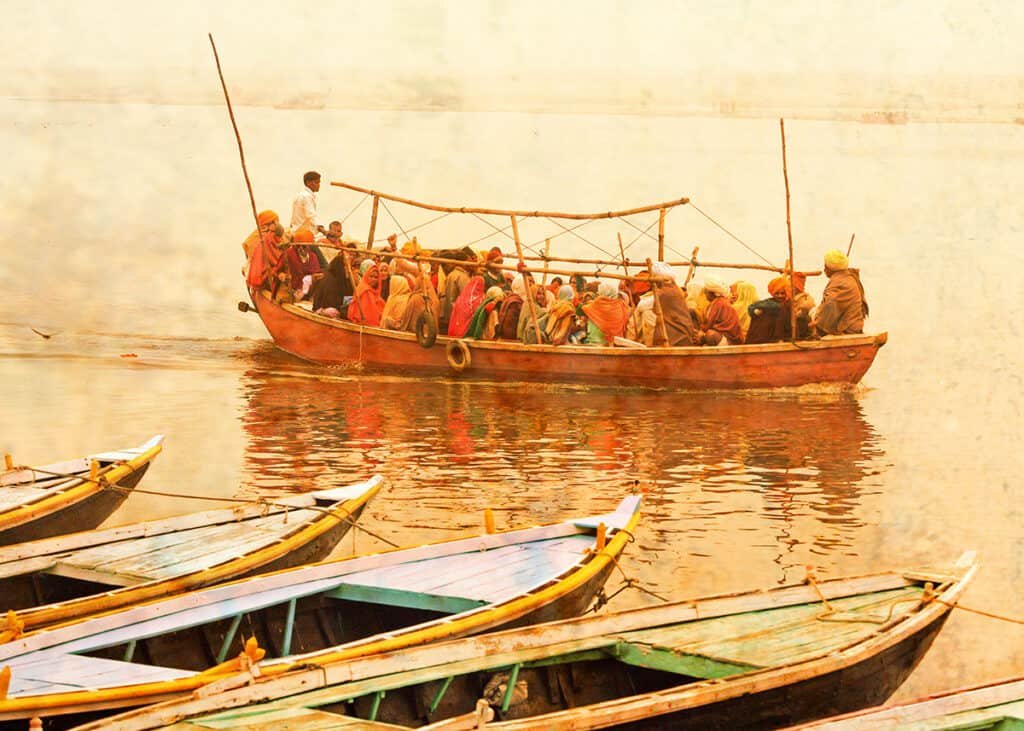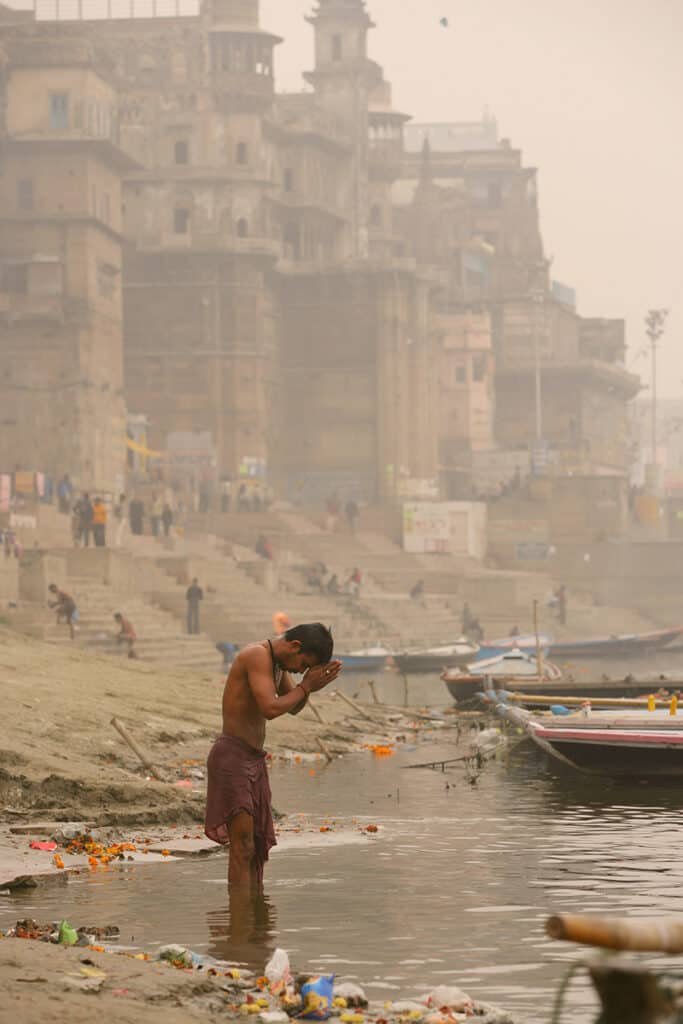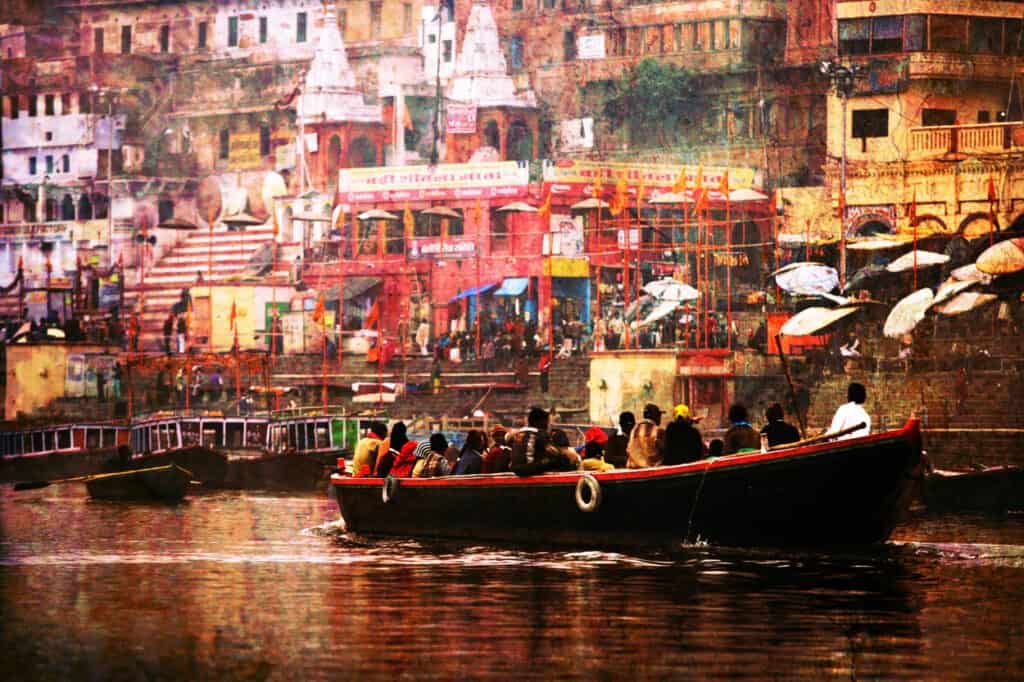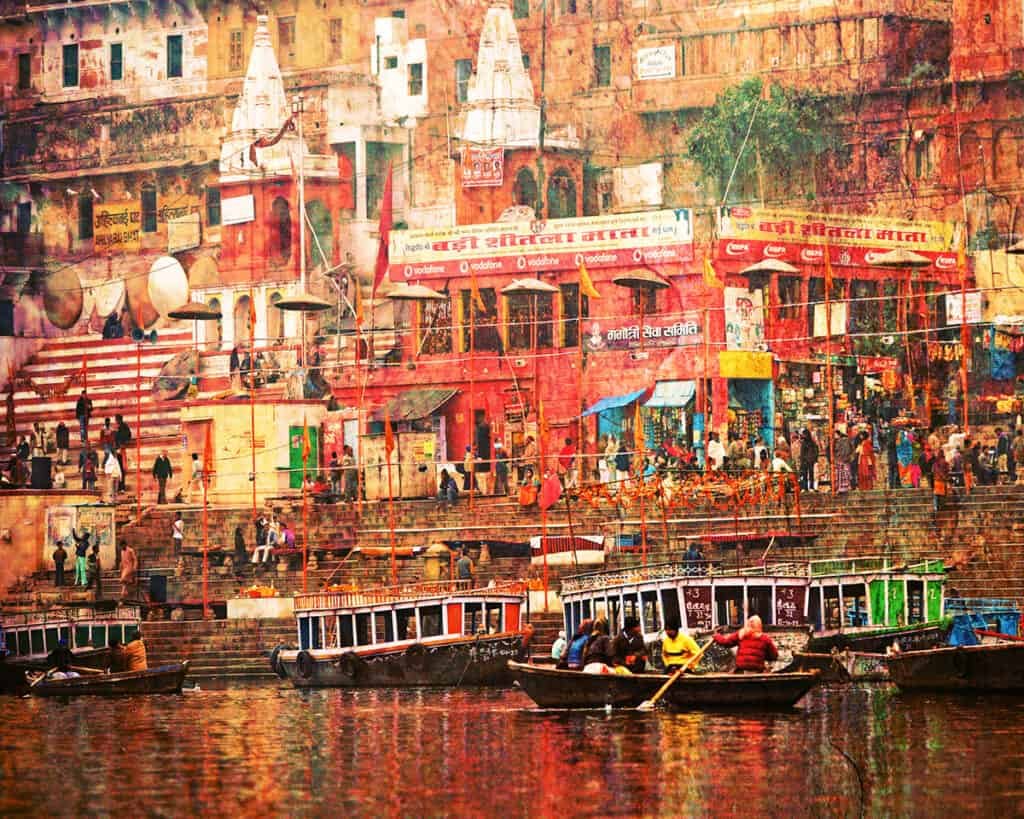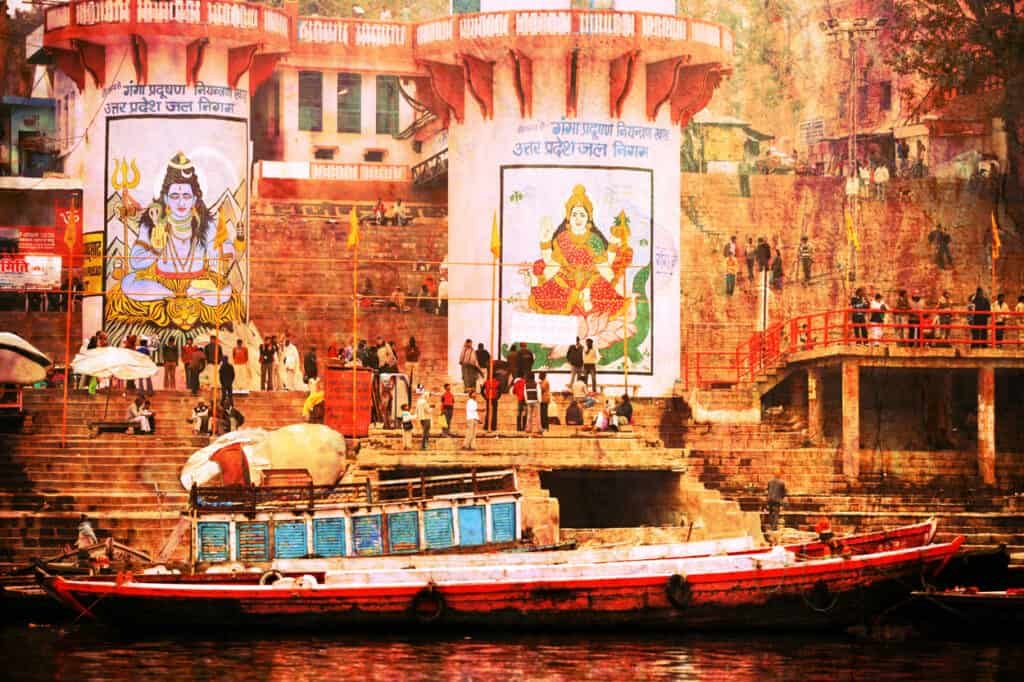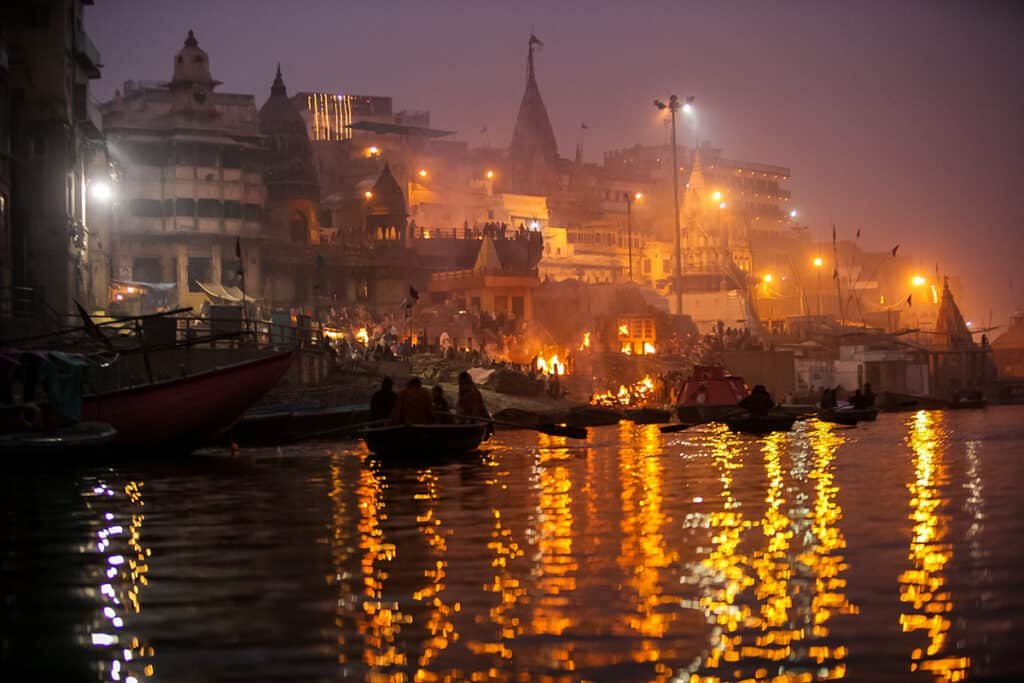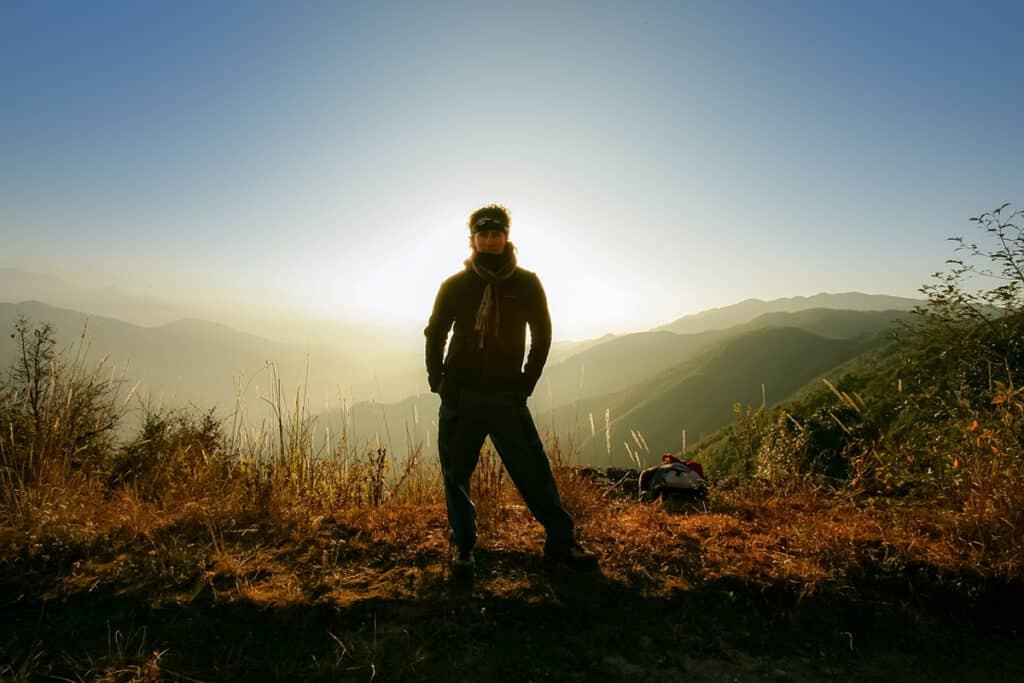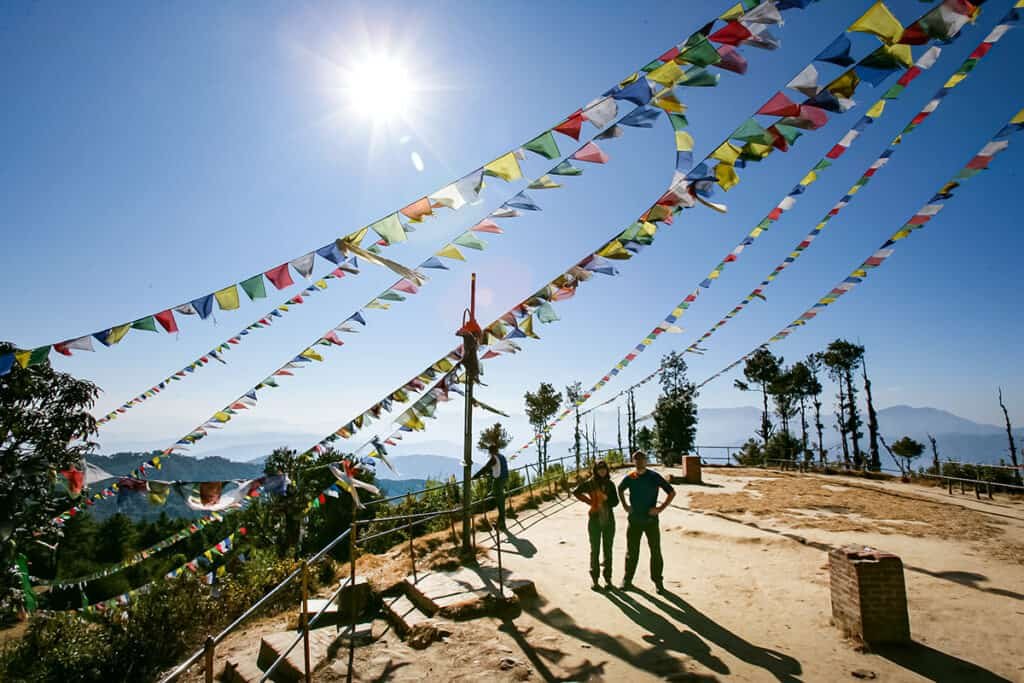Any experienced travel and adventure enthusiast would agree that a visit to India is an absolute must!!
In route in this Post:
- New Delhi
- Mandawa
- Bikaner
- Jaisalmer
- Jodhpur
- Udaipur
- Puskar
- Jaipur
- Agra
- Orchha
- Khajurahu
- Varanasi
- Katmandu
India is unique, colorful, and way different from any other country we’ve been to. It’s a true educational insight of diverse lifestyles and ancient cultures and a genuine “perfect organized chaos” at the same time.
Our first choice for India was a 3-week itinerary in the Rajasthan state traveling a total of 2500km by road and 320km by train. Rajasthan means “The Land of Kings” where ‘Raj’ refers to Kings and ‘Sthan’ stands for the place.
The distinctive atmosphere of another world where 22 royal kingdoms and principalities were merged, more than 45 forts, numerous palaces, spices, deliciously flavored gastronomy, and buzzing cities are only a few reasons to be entertained.
My first attempt to plan this trip, as usual, was surpassed by a local Indian Travel Agent, with a tailor-made travel plan proposal impossible to ignore.
Our entire trip would be with an experienced driver with a retro Ambassador car, all accommodations and our train tickets from Satna to Varanasi included.
There are numerous ways to travel India, from one of the world’s most luxurious trains, “The signature Palace on Wheels” to hiring a tuc-tuc or local busses.
In my opinion, hiring a local driver not only guarantees a more relaxed trip but all the first-hand tips and advice that has no price.
Our driver Banjarang made our trip truly unique. His website Bajrang Singh Shekhawat
Indian Transport
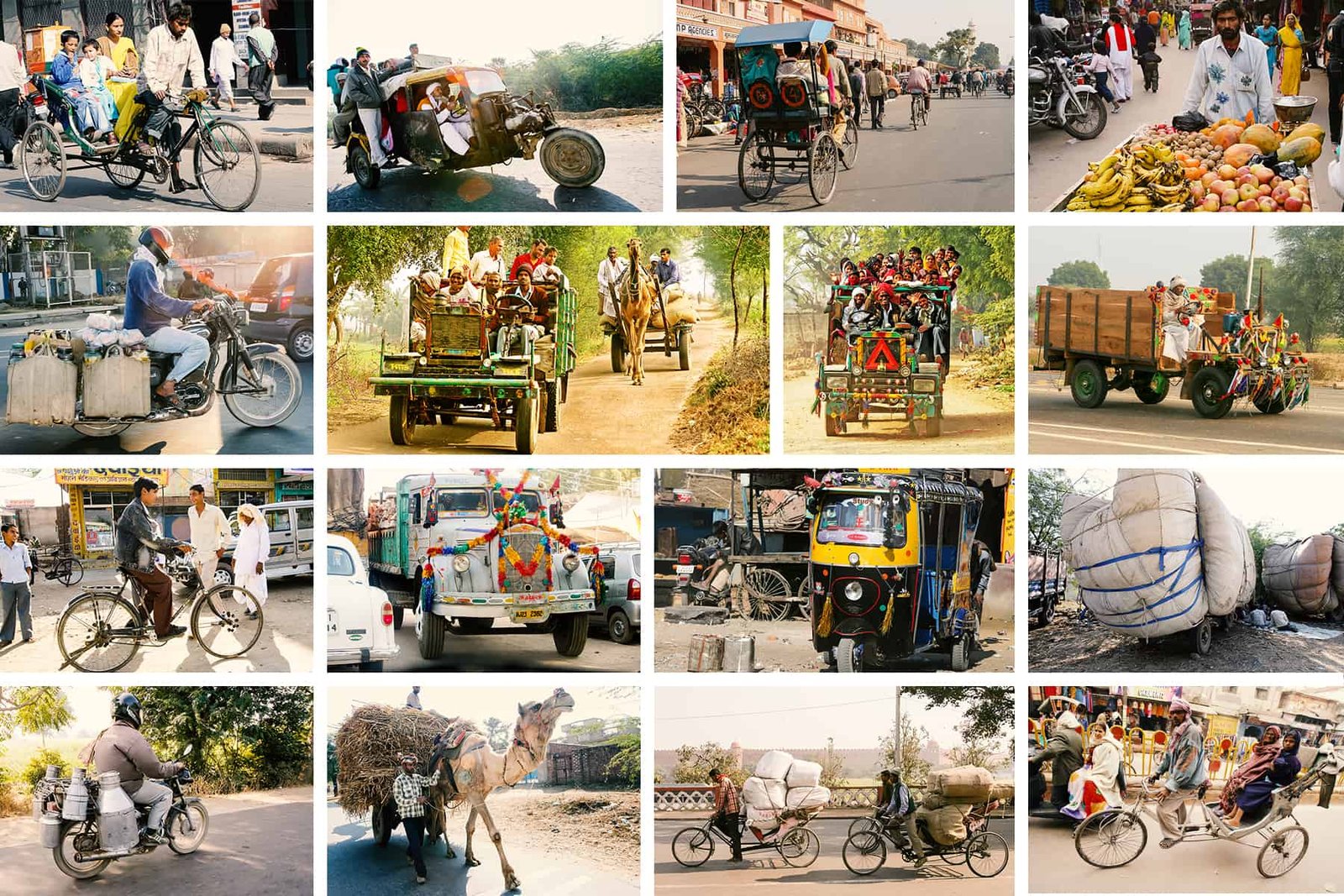
NEW DELHI
Our first impressions upon arrival in Delhi were quite shocking. The dense grey fog ( pollution), all the diverse hectic transport, and people everywhere were quite overwhelming.
Luckily Banjarang ( Baba ), our driver for the next 2 weeks picked us up at the airport and drove us straight to The Imperial Hotel (12,4km from Indira Gandhi International Airport ).
After a quick shower, we visited The historic Red Fort ( Lal Qila) in the city of Delhi. This fort served as the main residence of the Mughal Emperors.
In front of the Red Fort, we also entered our first mosques. Our 2nd mosque was the Masjid e Jahan Numa, commonly known as the Jama Masjid of Delhi, and one of the largest mosques in India.
In the afternoon we have time for two more visits, Humayun’s tomb, the tomb of the Mughal Emperor Humayun in Delhi, and The India Gate.
This war memorial is located astride the Rajpath, on the eastern edge of the “ceremonial axis” of New Delhi, formerly called Kingsway. It stands as a memorial to 70,000 soldiers of the British Indian Army who died in 1914 and 1921 in the First World War.
Our recommended pick for supper was Pindi Restaurant, a classic restaurant serving standard Indian food known for its extensive range of chicken dishes.
The next morning at 8:00 we had to be ready for our 5-hour journey ( 250km) to Mandawa.
MANDAWA
Booking.comOur first long adventure drive with Baba was very productive as we were advised on many local shopping hacks, where to get the best deals, and knowing how to choose Indian street food without getting sick.
Take note: Where to shop the right articles.
JODHPUR = SPICES = CLOTHING = INCENSE
JAIPUR = GOLD = SILVER = SHOES = PAPER
AGRA = MUSIC = MARBLE
UDAIPUR = PAINT = BOOKS
Driving on Indian roads I got the chance to photograph the unique transport used by many, and don’t be surprised to see camels, bicycles, tricycles, trucks, cars, pedestrians, tuc-tucs, or even elephants on the highway!!
Our Accommodation at Mandawa was at the Heritage Hotel Castle Mandawa.
Before supper, we had time to visit some of Mandawa Havelis. They’re traditional townhouses, mansions, manor houses, or forts that usually have historical or architecture. Courtyards are a common feature of these houses.
Our romantic supper at Monicas Roof Top Restaurant was well worth a while. Delicious Chicken Tikka Masala among other fantastic dishes.
BIKANER
Mandawa to Bikaner took us about 4 hours (192km), but along the way, we visited the Seth Arjun Das Goenka Haveli in Dundlod (Raj). Junagarh Fort in Bikaner is worth the visit.
The foundation of Junagarh Fort was laid on 30th January 1689 A.D. by Raja RaisinghJi, the sixth ruler of the Rathore dynasty of Bikaner.
Junagarh Fort remained the stronghold of Rathore rulers until the state merged into the Union of India in 1949 A.D. It today houses a museum, displaying the heritage of rulers of Bikaner.
The impressive Laxmi Nivas Palace Heritage Hotel, once home to Maharaja Ganga Singhji was our next choice of accommodation.
The detailed carved red sandstone building, spacious retro rooms, attentive staff, and marvelous courtyard create a true palace experience. After supper in the courtyard garden, we further explored the rooftop with unique views.
JAISALMER
After a super fantastic breakfast, we were ready for our 7-8 hour ( 285 km) journey to “The Golden City ” of Jaisalmer that lies in the heart of the Thar desert.
The town stands on a ridge of yellowish sandstone and is crowned by the ancient Jaisalmer Fort.
Along the way, we Baba stopped for a street food snack lunch. Before arriving at Jaisalmer we had to see the famous “Rat temple” with our own eyes.
The Karni Mata Temple is a Hindu temple dedicated to Karni Mata at Deshnoke with approx 25 000 black rats living there. Quite a unique experience!!
The next 2 nights we stayed over at the Rang Mahal Hotel in Jaisalmer. The dessert sunset at Bada Bagh, Royal Cenotaphs garden complex, about 6km outside Jaisalmer is also worth the visit.
Baba dropped us for supper at the “Golden Fort” Restaurant, in Ring Road, near the fort parking. We had absolute confidence in all Baba’s recommendations, as he’s fond of a good life and food like us.
Among the many things Jaisalmer has to offer, the Sonar Quila or Golden Fort is the most spectacular. It is believed to be one of the very few “living forts” in the world, as nearly one-fourth of the old city’s population still resides within the fort.
The massive yellowish sandstone walls fade to honey gold with sunset.
The multi-cuisine Jaisal Restaurant was a great choice and the best silver jewelry deals we made at Mr. Manak Lal Soni’s traditional Jewelry store.
Another popular attraction is a desert camel ride at Khini and to enjoy the unique sunset over the dunes.
JODHPUR
Today we had to drive another 280 km to the famous blue city of Jodhpur also situated in the Thar desert. Before checking in at the Ajit Bhawan Palace Resort we visited the JASWANT THADA (1906 A.D.), a white marble cenotaph of the Rathore rulers of Jodhpur-Marwar.
The massive Mehrangarh Fort was next on the list. This impressive reddish fort stands on a hilltop about 122m above Jodhpur and is considered one of India’s largest and best-preserved forts. Definitely worth the visit.
To satisfy the dress code at Ajit Bhawan’s Christmas Eve Supper we stopped by a local tailor to pick up an Indian Saree and a traditional Indian shirt.
We normally avoid big buffets but this special occasion was a true Indian gastronomical experience with a huge variety of delicious traditional food along with the festive atmosphere created in the courtyard.
The next morning before leaving to Udaipur we stopped for Indian spices at SUNCITY SPICES and some clothing and crafts at Village Craft VIA BISHNOI.
Baba was fascinated with Eva’s bargain strategy ( she’s a good maths teacher ) and called her the “master”. We left with so many good deals and from there on I left the rest of the shopping during our trip in her hands!!
UDAIPUR
Jodhpur to Udaipur is another 260km. Even though we traveled many kilometers by road, Baba made every trip an adventure.
Our road expeditions became a daily ritual, from stopping for samosas or any other street food for lunch, to charing handy information on the local Indian lifestyle or telling unique stories along with the ever-changing and captivating landscapes.
A samosa is a South Asian fried or baked pastry with a savory filling like spiced potatoes, onions, peas, chicken, and other meats, or lentils.
On our way to Udaipur, we could visit the Jain Temple in the village of Ranakpur.
The construction of the temple started in the 15th century following a divine vision. The Ranakpur temple is one of the largest and most important temples of Jain culture.
Our accommodation choice was the Heritage Boutique Hotel, Jagat Niwas Palace, an early 17th century ‘Haveli’ (mansion), with its charm and aesthetics intact situated on the eastern banks of Lake Pichola.
The perfect shelter in the romantic city of Udaipur. Our favorite restaurant was Udai Kothi.
PUSHKAR
Before traveling the 280km to Pushkar we had to pay a visit to the Chittorgarh Fort situated in the historical city of Chittorgarh.
The Chittorgarh Fort is also one of the largest forts in India and a UNESCO World Heritage Site.
The Majestic fort was the capital of Mewar and it stands on a hill 180 m in height and covers an area of 280 ha above the plains of the valley on the banks of the Berach River.
Pushkar is a sacred Hindu village with 52 ghats (stone staircases) where pilgrims bathe. The town has hundreds of temples, including 14th-century Jagatpita Brahma Mandir, dedicated to the god of creation, which has a distinctive red spire and walls inlaid with pilgrims’ silver coins.
Arriving at Pushkar we check in at the best Hotel in town, The Heritage Jagat Palace Hotel. We had an authentic warm welcome by the guards at the palace entrance and the huge retro room was perfect.!
The rest of the afternoon we visited some temples and enjoyed the deliciously spicy food at Umaid Mahal Restaurant.
JAIPUR
At 08:00 we were on the road again to Jaipur (145km). Jaipur, also called the “Pink City” for its trademark building color, the colonnaded City Palace complex, part of it still today is a royal residence.
Our accommodation choice was the fantastic Luxury Heritage Hotel, Shahpura House, an Early 19th Century Palace of Shahpura Royal Family in Jaipur located in the heart of the Pink City.
In the afternoon we visited the City Palace, local market and old town. At 19h00 we had to be ready for a 10km tuc tuc ride to the outskirts of Jaipur.
Our driver Banjarang invited us for supper at his house and we got the chance to meet his friendly family. His wife, Pushpa made us some mouth-watering local Indian food and the best chapatis ever!! Ever thankful to you Baba!!
The next morning we went to visit Hawa Mahal, the Palace of the wind, the Amer Fort, and the Jal Mahal Palace (meaning “Water Palace”), a palace in the middle of the Man Sagar Lake.
Late afternoon we treated ourselves to a True Ayurvedic Massage at Kerala Ayurveda Kendra. Our recommended Handi Restaurant for supper, a Legendary Restaurant for Tandoori and Mughlai cuisine was a great decision.
AGRA
The next 300km took us to Agra, but of course with no rush. Baba took us to a secret place to buy 2,5 km of fresh Honey and some local Rum.
About 35km before arriving at Agra we visited the red fort at the UNESCO World Heritage Site, Fatehpur Sikri. The inscribed property constructed in red sandstone covers 60.735 ha.
The complex of monuments and temples, all in a uniform architectural style, includes one of the largest mosques in India, the Jama Masjid. We stayed over at The Oberoi Amarvilas Agral.
This was our last day with our driver Banjarng so we went for a farewell Supper at Indiana Multi-cuisine Restaurant. The best Chicken Tika and ButterChicken so far!! We enjoyed a last drink together and we saw him off!!
The next morning at 06:00 we met with our new ( 2nd) driver that took us to visit one of the new seven wonders of the world, the famous Taj Mahal Mausoleum.
The Taj Mahal is an ivory-white marble mausoleum on the southern bank of the river Yamuna in Agra. It was commissioned in 1632 by the Mughal emperor Shah Jahan to house the tomb of his favorite wife, Mumtaz MahalIt, and himself.
The early morning fog created an atmosphere ever more mystic and interesting. This masterpiece is by far the best jewel of Muslim art in India.
Many masons, stone-cutters, inlayers, carvers, painters, calligraphers, dome builders, and other artisans were requisitioned from the whole of the empire and also from Central Asia and Iran. Don’t miss this majestic mausoleum on your Indian trip!!
ORCHHA
After checking out at the The Oberoi Amarvilas Agral. we took the road ( with our new driver ) again to Orchha. After 3 hours drive, we stopped to visit Gwalior Fort, situated on top of a hill near Gwalior, and considered among the best fortresses of India
. It is also one of the most impenetrable forts in the country. Known for its great architecture and rich past, Gwalior Fort is a must-visit attraction when visiting Central India.
The numerous temples and monuments along with the spectacular famous Royal Chhatris or Cenotaphs ( Historical monuments situated on the banks of River Betwa in Orchha), make the town of Orchha totally recommended.
From our Hotel, the Orchha Resort we could see some of the fourteen cenotaphs, memorials built to honor kings and Marahas, with carvings dating back to the 16th and 17th centuries.
The best option for celebrating the new year was having supper at the resort.
KHAJURAHO
After our 2 day visit to Orchha, we drove to Satna to take the train at 19:30 to Varanasi, but along the way, we still had to visit the famous UNESCO World Heritage Site of Khajuraho.
Khajuraho is a Group of Monuments, a group of Hindu and Jain temples in Chhatarpur district, Madhya Pradesh, India, about 175 kilometers southeast of Jhansi.
These temples are famous for their nagara-style architectural symbolism and their erotic sculptures and we spent quite a while exploring the extremely detailed building and towers. Definitely worth the visit.!!
Luckily we still have a last dinner recommendation from our 1st driver, Banjarang at the rooftop Restaurant La Terraza. The owner, one of Banjarang’s friends welcomed us with a big smile!!
His hospitality and appetizing food made our day!
We still had a few minutes for the last shoppings before departing to Santa TrainStation.
VARANASI
I wasn’t very eager for a train ride in India, as they are very famous to be always packed with loads of people, but Eva wanted to experience this “ones in a lifetime” ride.
Eventually, when we heard the train arriving at the station around 19h30 she ran not to miss it and fell on the platform with the luggage scatted all over..Ohh!!..Luckily she survived without any serious injuries!
After a rough night on the train with barely any sleep we arrived around 04h40 at Varanasi. Our new friendly driver Gobi was on time to drop us at the Taj Ganges Varanasi.
The friendly staff allowed early check-in and complimentary breakfast. Around 10h00 we met Gobi again for a visit to the famous Ghats ( a series of riverfront steps leading to the Ganges river).
The city has 88 ghats and the most impressive by far was the Manikarnika Ghat, one of the main ceremonial sites. One of the oldest and the most sacred ghats in the holy city of Varanasi is Dashashwamedh.
This place is most famous for its Ganga Arti ( a holy fire ritual), which is an elaborate and lively ceremony that takes place at dusk every day.
The atmosphere that hangs over the spiritual city of Varanasi is congested, chaotic, dirty but a truly unique experience. The holiest river in India, the Ganges is the center of all rituals and testimony of the circle of life and death passing by every day.
The Indians believe that a dip in this river guarantees a good life, absolution from sins, and attainment of nirvana, and the obsession of many to visit Varanasi at least once in a lifetime.
At night we hired a small boat to witness the ceremonial pyres from a different point of view.
We also paid a visit to Sarnath, about 10km from Varanasi is the place where Gautama Buddha first taught the Dharma then Buddhist Sangha has originated as well as came into existence because of the enlightenment of Kondanna.
KATHMANDU
We extended our trip to visit Nepal to do some hiking in the Himalayan mountains. Taking a bus or train would have taken at least 15 hours so we decided to fly from Varanasi to Katmandu with Nepal Airlines, and save some time. ( Flight duration 1h 24min ).
Arriving at the airport you’ll have to pay for a tourist visa to visit Nepal. The multiple-entry (15 days / $30 US) visa suited our stay.
Our accommodation choice to overnight in Kathmandu was the YAK & YETI Hotel. At the HIMALAYAN GLACIER Trekking center we could hire a driver, our registration card for trekking in the Langtang region, and a guide if you wish. The cozy Thamel House Restaurant serving traditional Nepali and Newari food was an excellent choice.
The next three days we were conscious and knew there would be no luxury Hotels on the way and we had no pre-reservation made.
Our hiking expedition started at Sundarijal, about an hour’s drive from Kathmandu at the Shivapuri Nagarjun National Park. The uphill hike from Sundarijal to Chisopani ( 12km ) with its never-ending stairs between villages was quite tough.
At Chisopani village, actually only a group of 4 or 5 houses, we stayed at the ” Fabulous” Lama Dorje Lakpa Hotel, the worse Hotel accommodation ever!! Unfriendly, rude owner with dirty rooms!! After a quick “de infective” shower at 06h00, we were on track again to Nagarkot ( 18km ).
The breathtaking mountain top views with snow-white Mount Everest in the far made us forget about the low temperature and our fatigued legs.
We met a Canadian named Mark who hiked with a guide and we soon became hiking companions. At Nagarkot, we stayed over at Club Himalaya, by ACE Hotels.
At least we had a warm shower and a delicious supper. Our final stretch was from Nagarkot to Nala, a somewhat uphill 15km hike.
Arriving at Nala we met with our driver who took us back to Kathmandu. We had supper with Marc at the K-Too Beer and Steakhouse, a good choice to celebrate our last meal in Nepal.

FINAL THOUGHTS ABOUT OUR TRIP
Before going to Rajasthan bear in mind that India is one of the world’s most populated countries and 25 % of their population is living on less than $2 a day.
Many dramatic scenes are to be witnessed and many extreme situations could have a negative impact on travelers.
On the other hand, it’s such a unique country with a rich culture and ancient art, magnificent architectural diversity, and its chaotic buzzing cities. The culture here shows the essence of its lifelong history.
Two years later we went back for another Indian adventure, visiting Kerala and Mumbai. Don’t miss my next post on Kerala and Mumbai coming soon!
For more intersting adventures read my posts on “Ultimate 2 weeks in South Africa” and “Amazing secrets of Spains top wine region”
Camera gear I used in this post
Canon 5D Mark IV, Canon 7d mark II, Fuji x100V and Samsung Smartphone. Some good quality lenses like Canon EF 70-200mm f/2.8L IS III USM, Canon EF 50 mm f/1.8 STM and the Canon EF 16-35 mm f/2,8L III USM.
Booking.com



